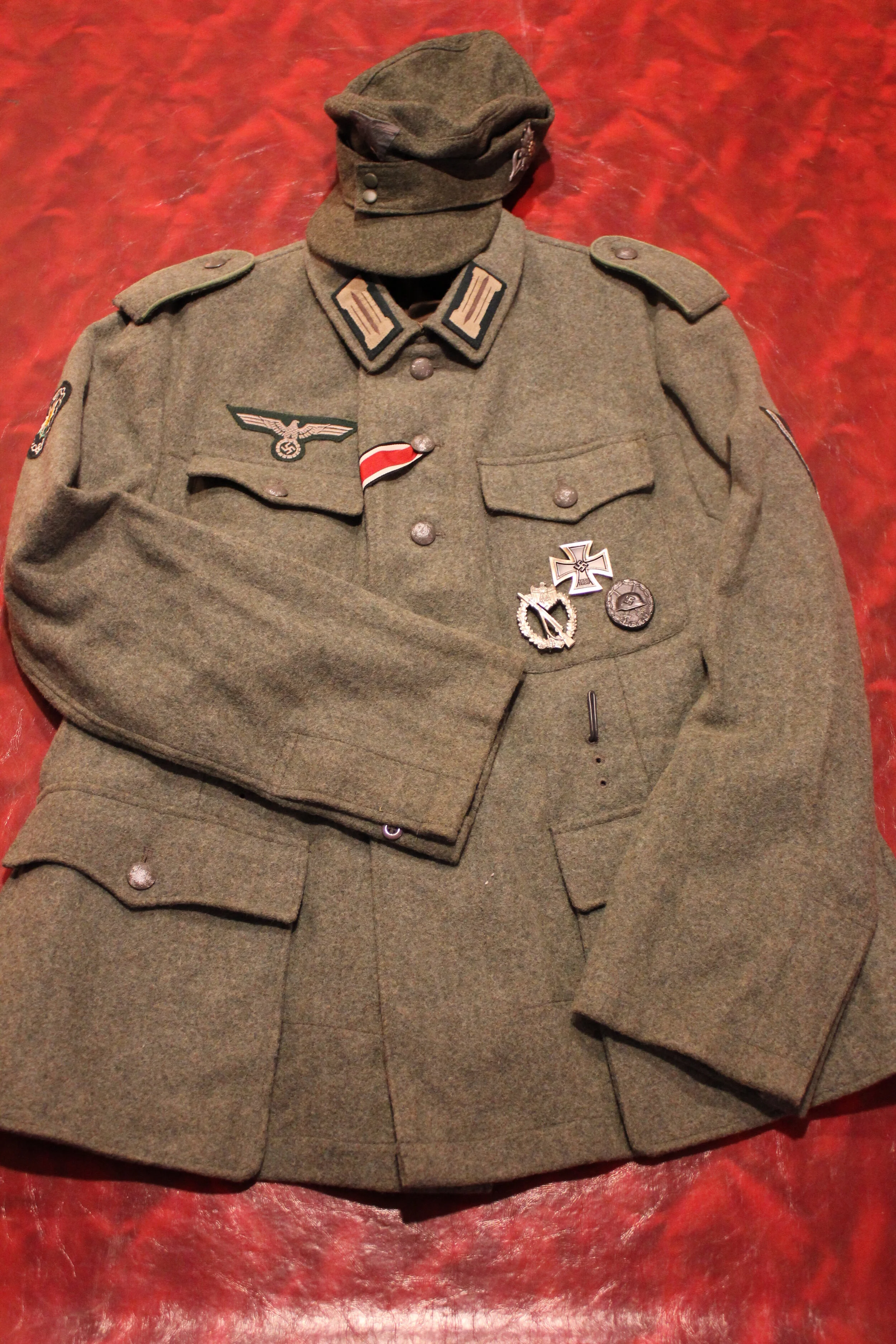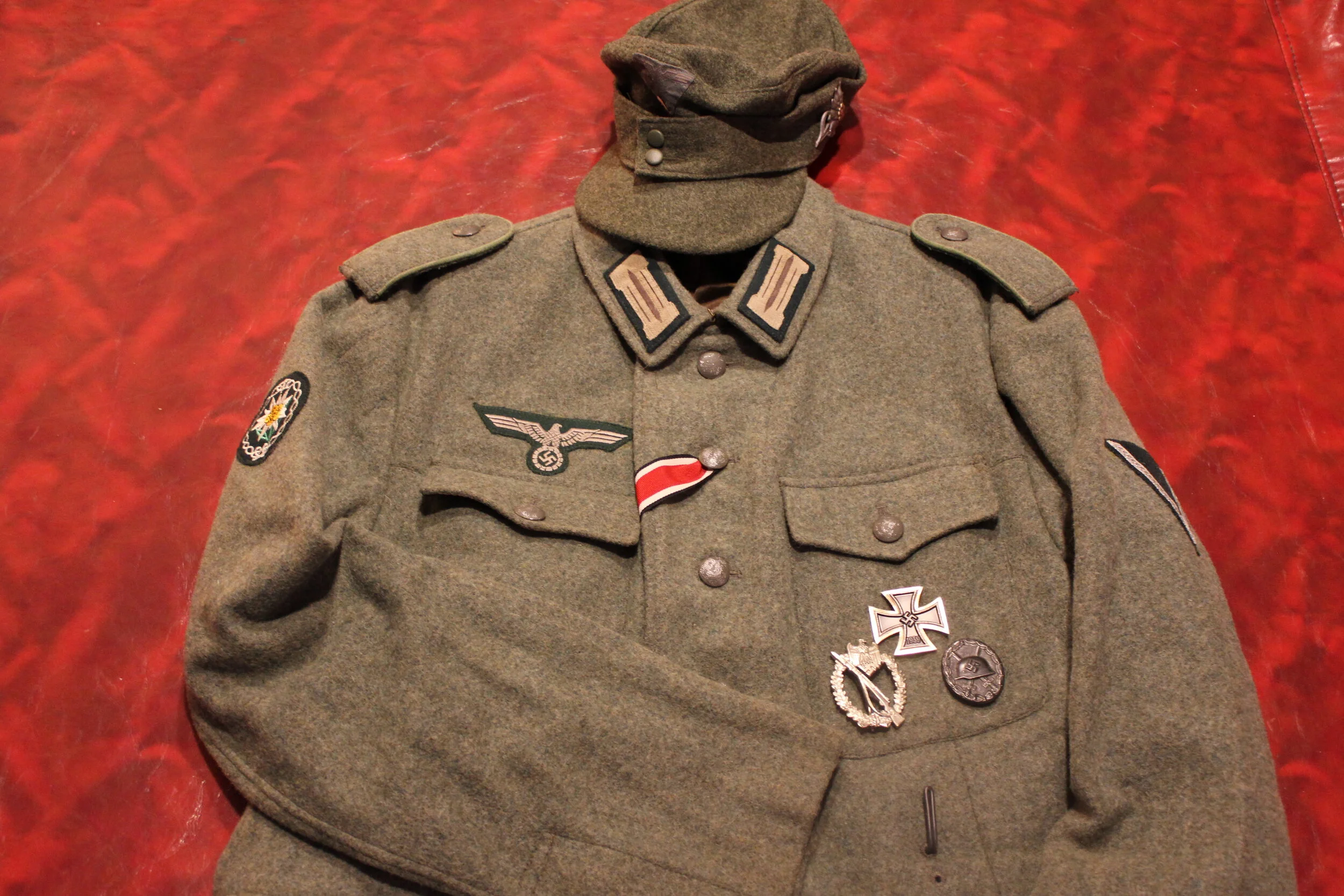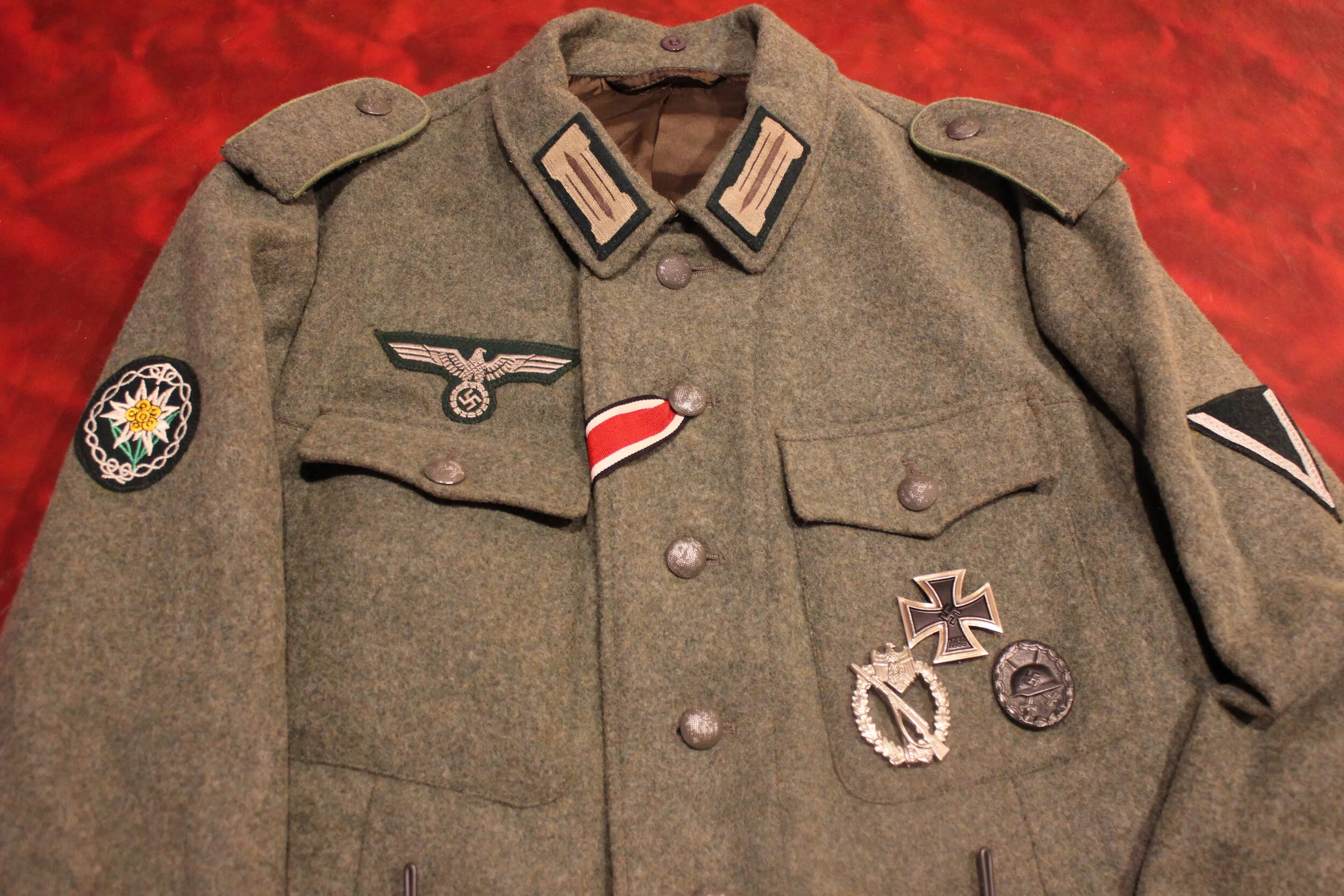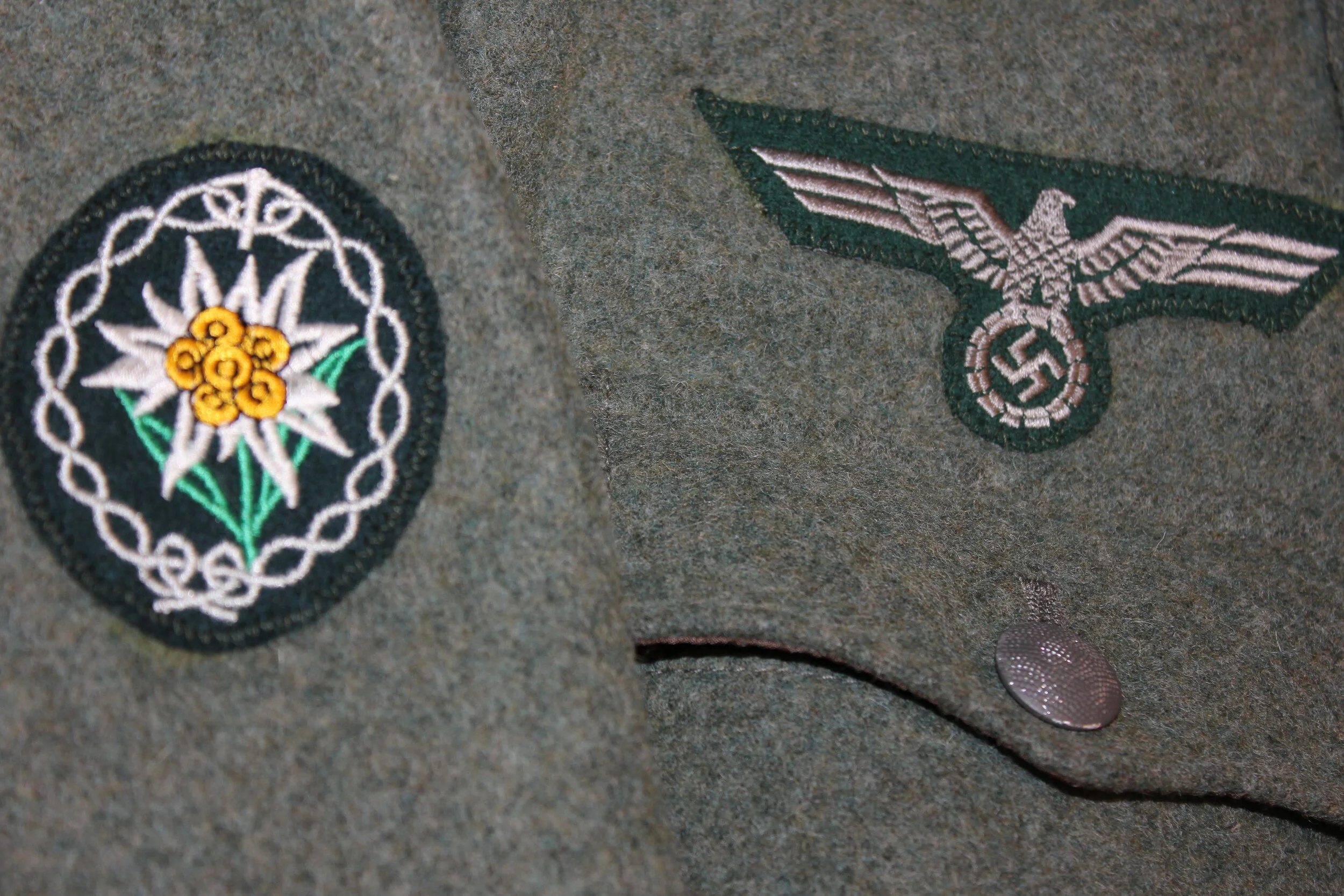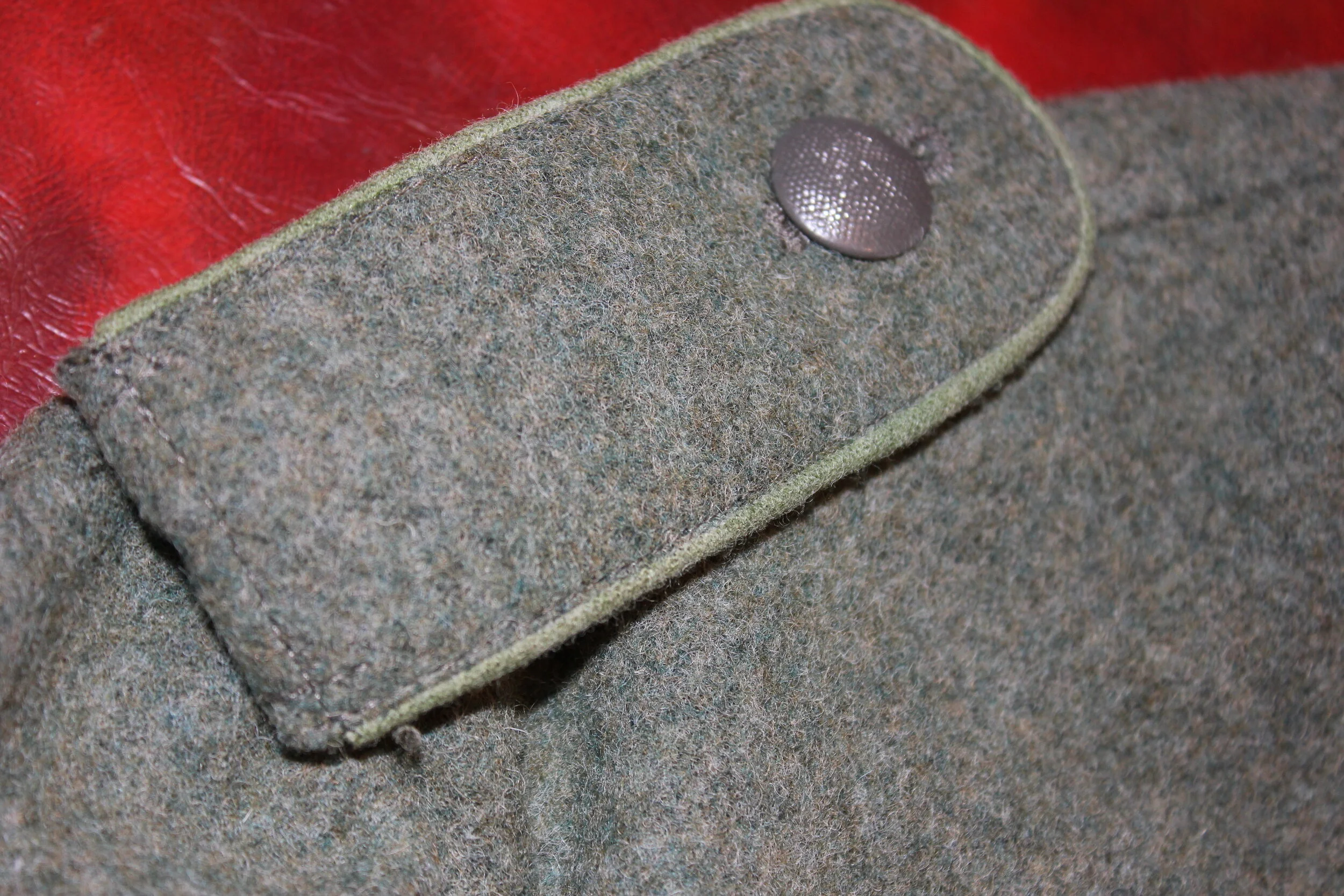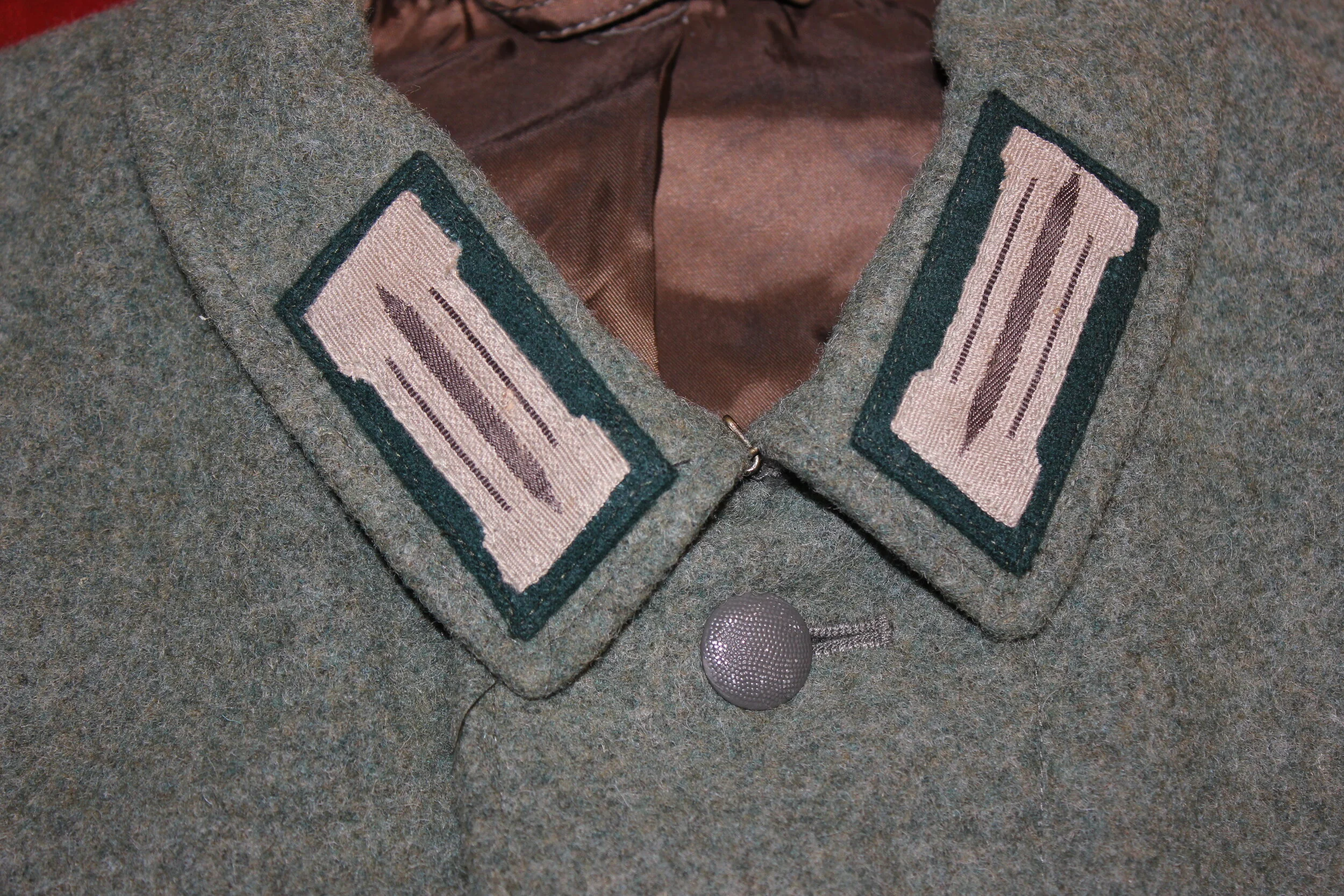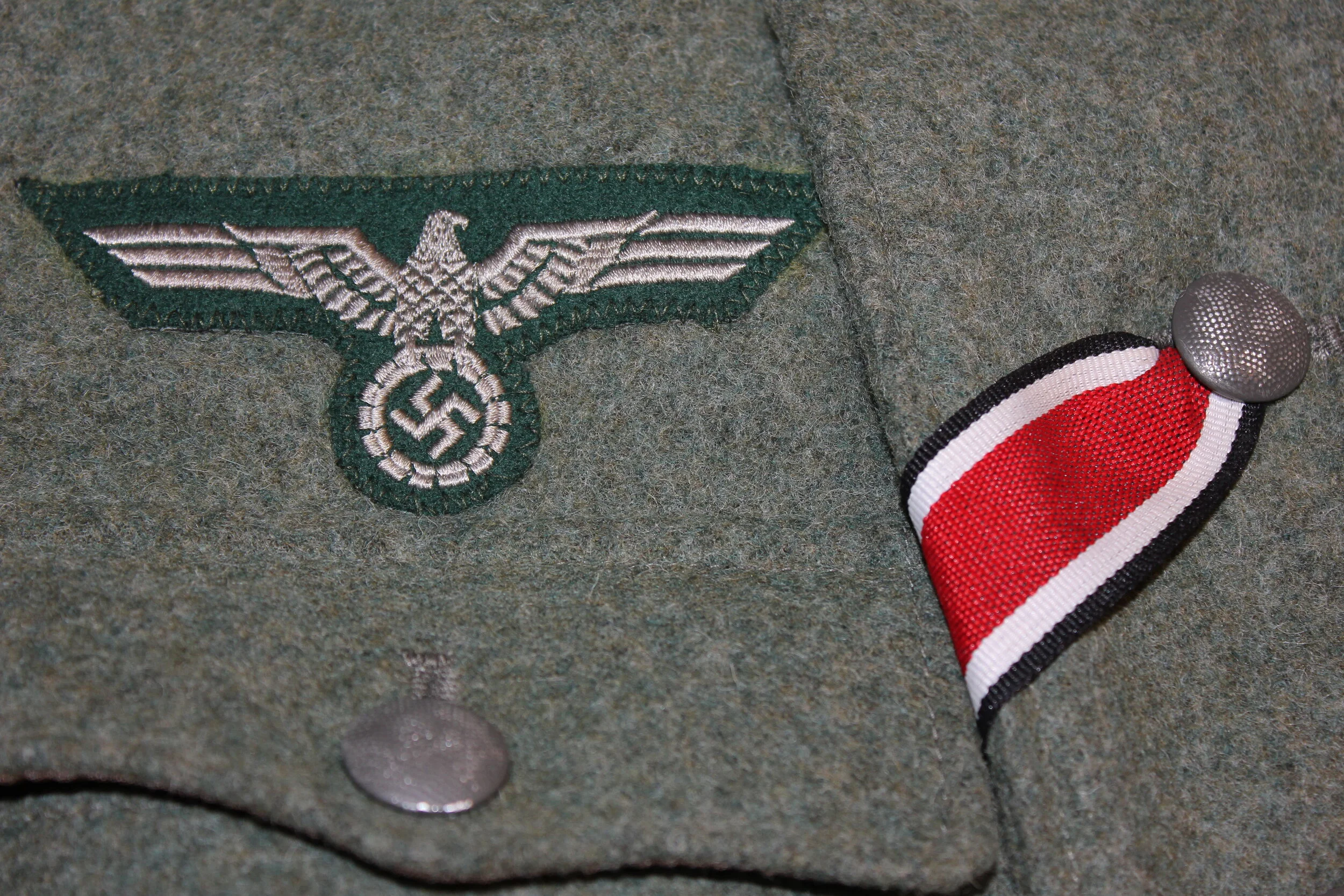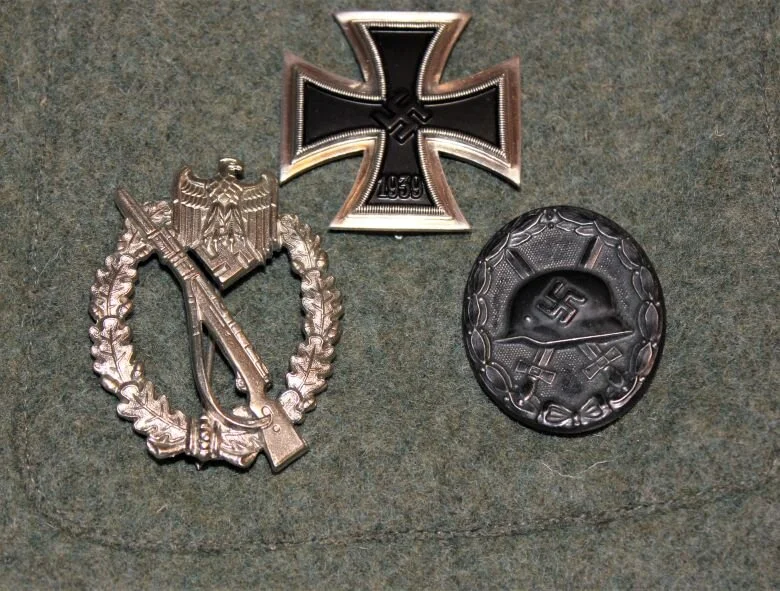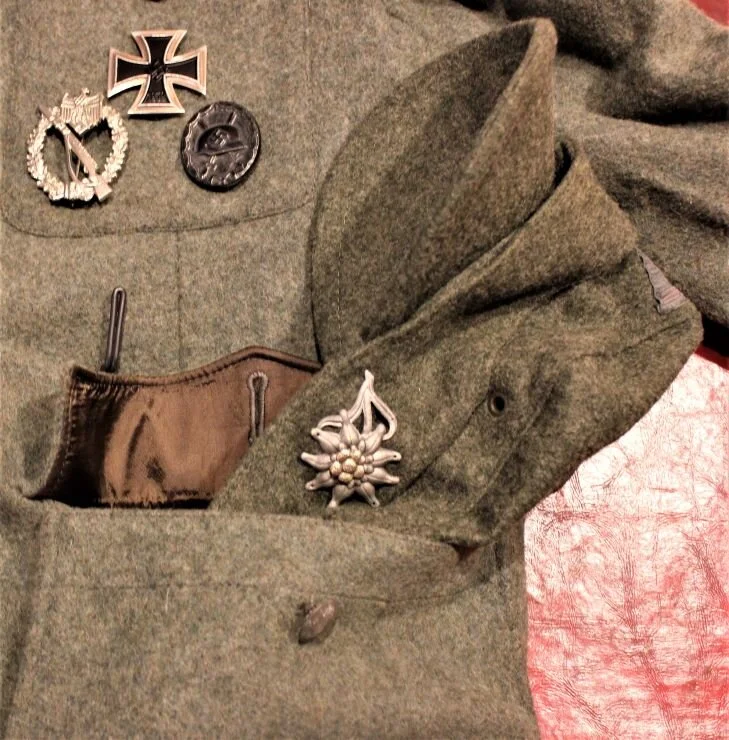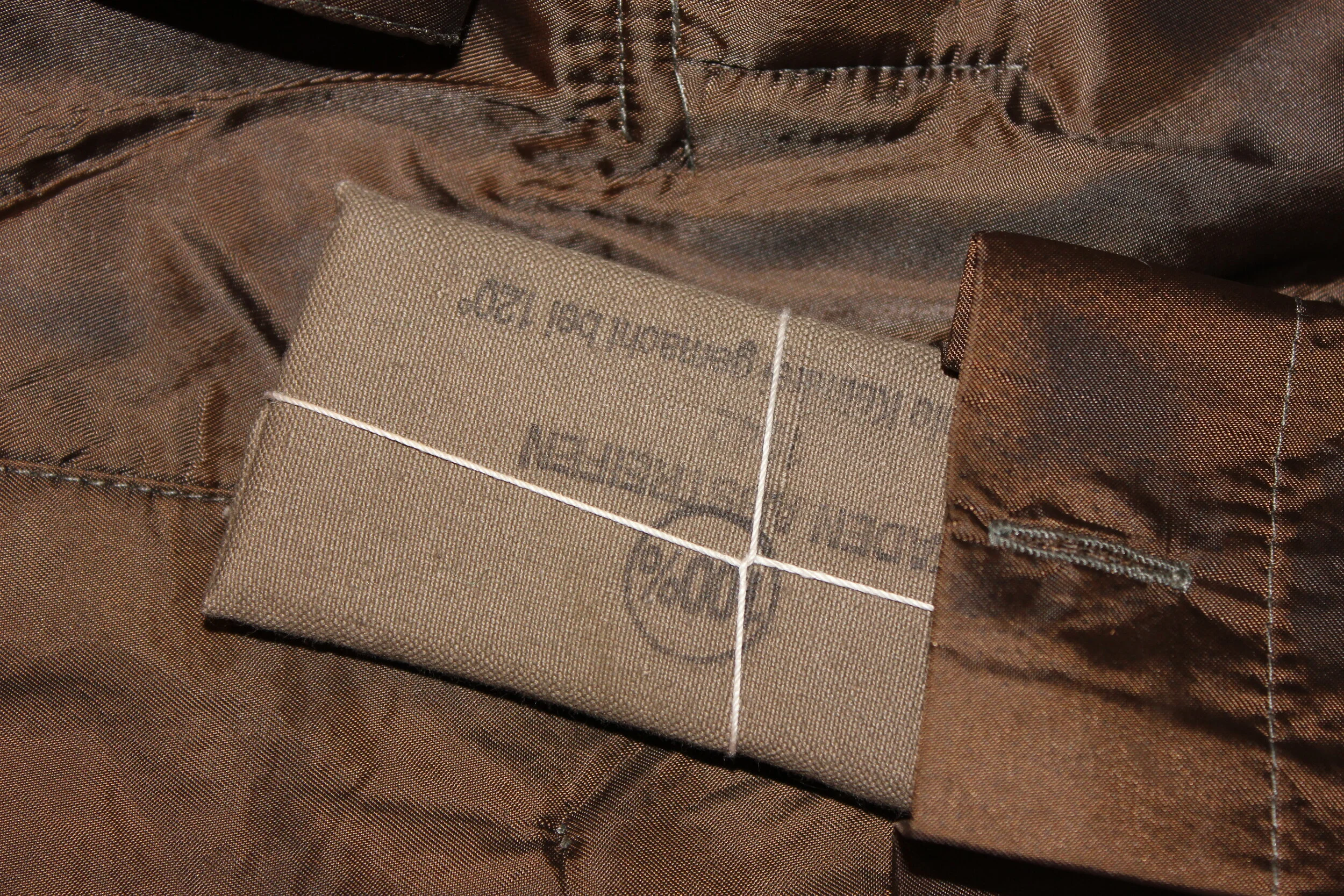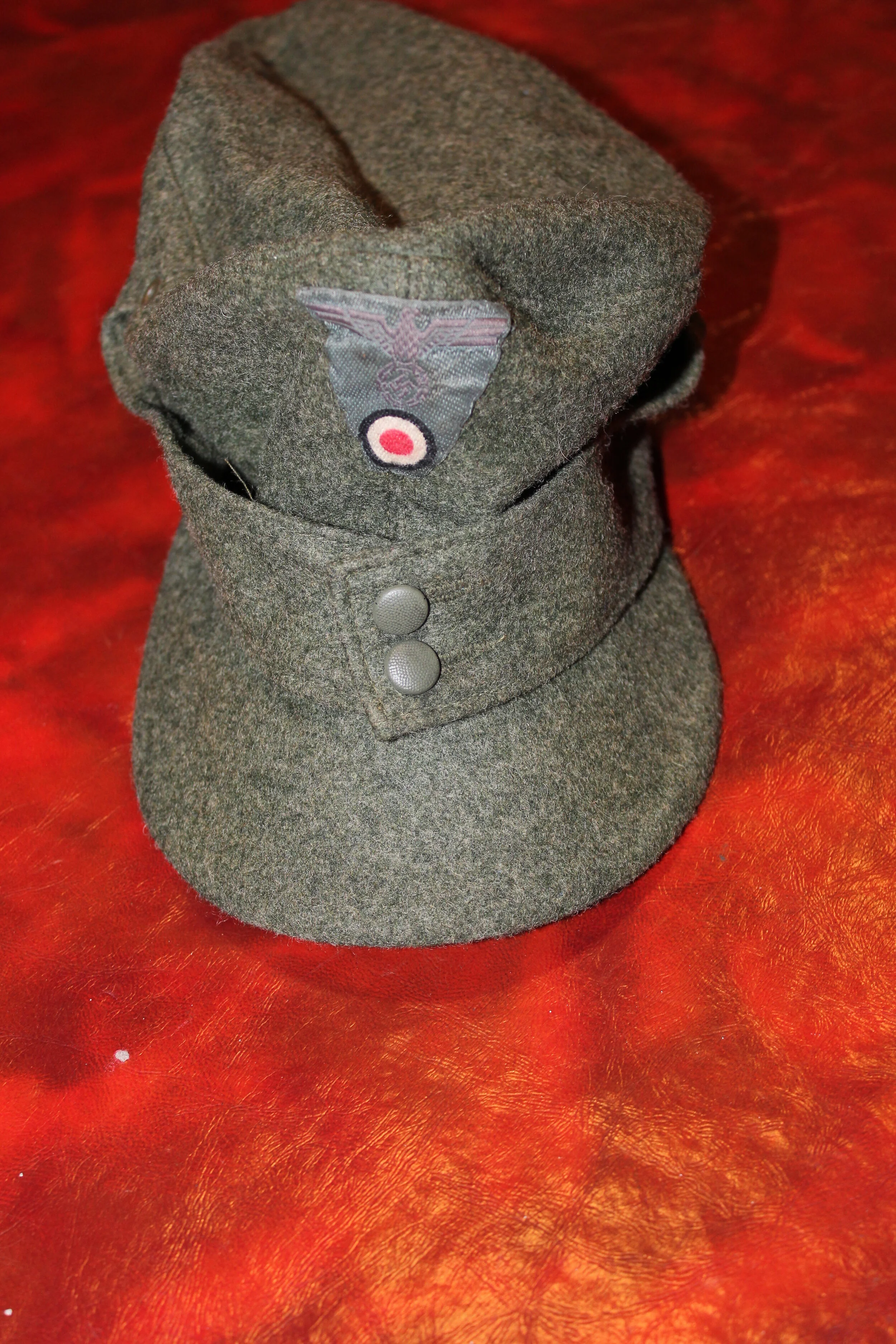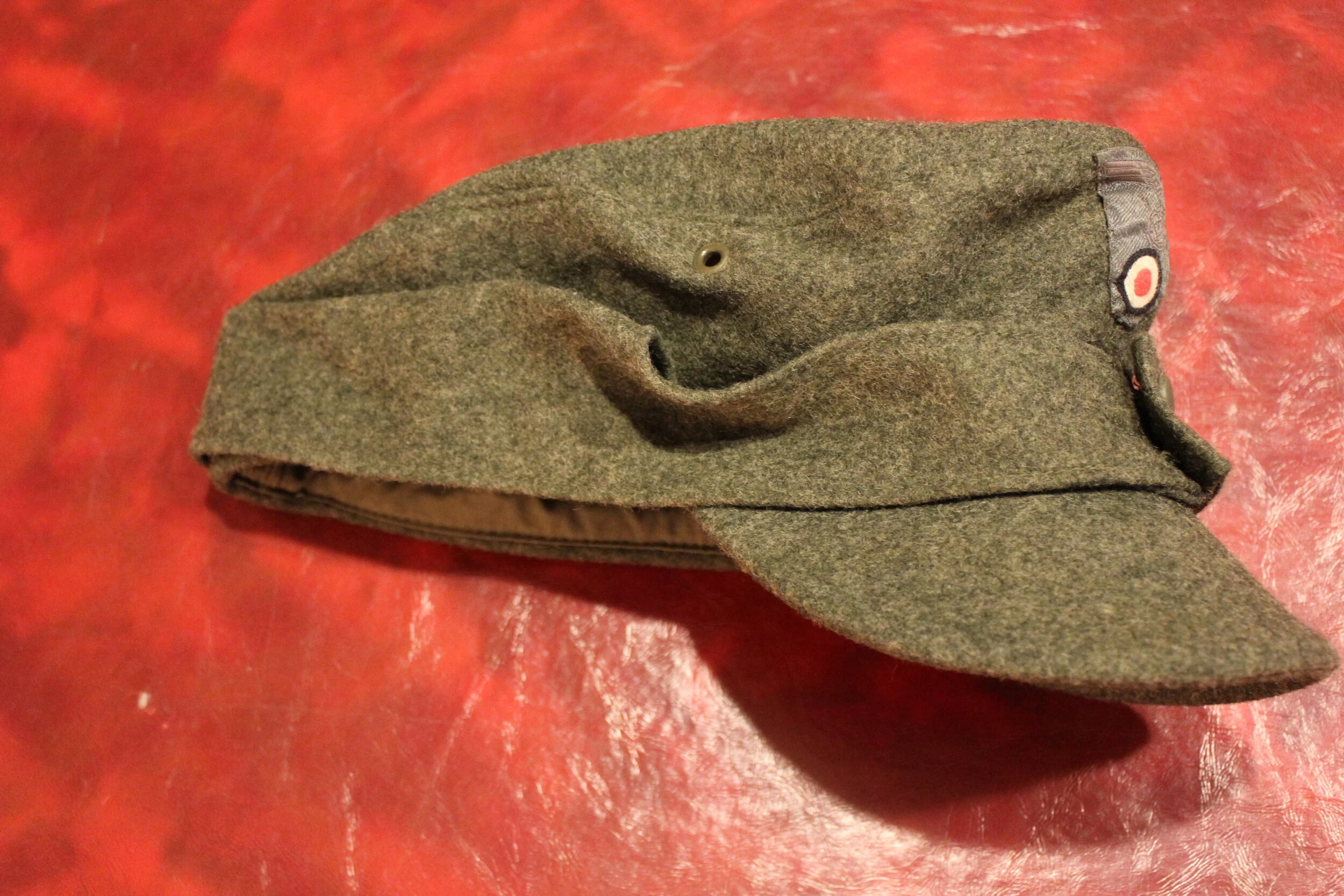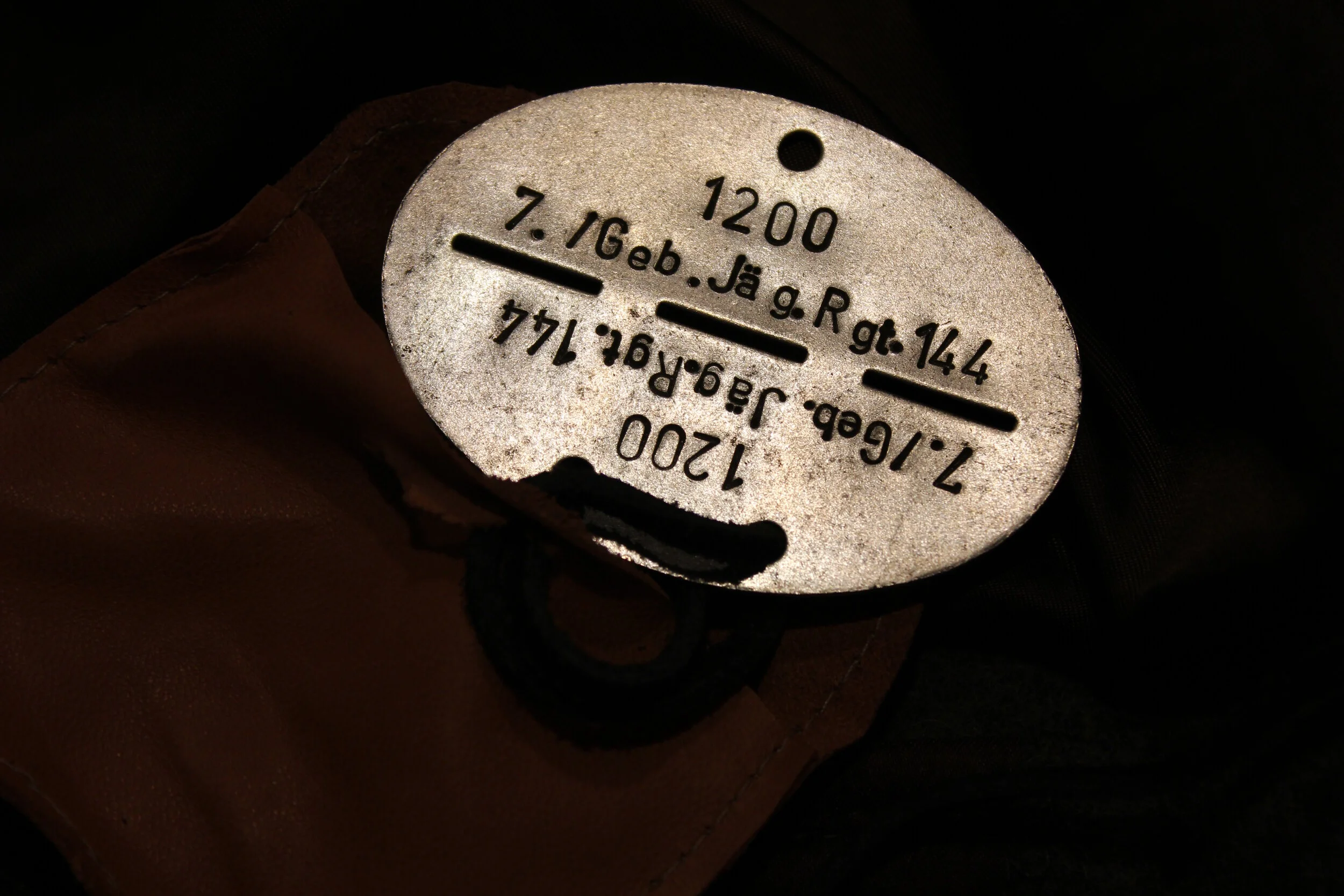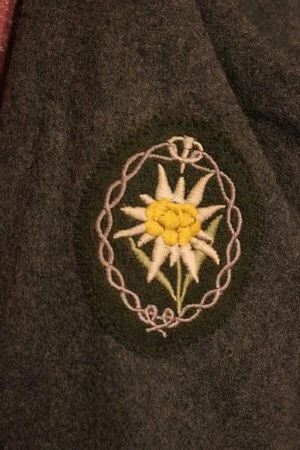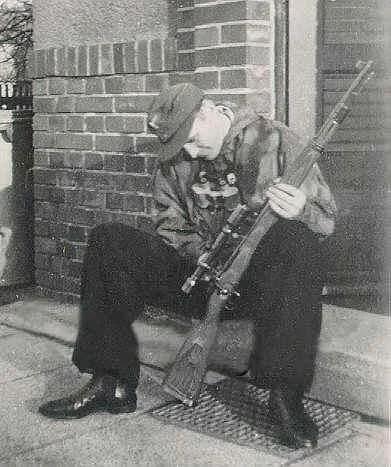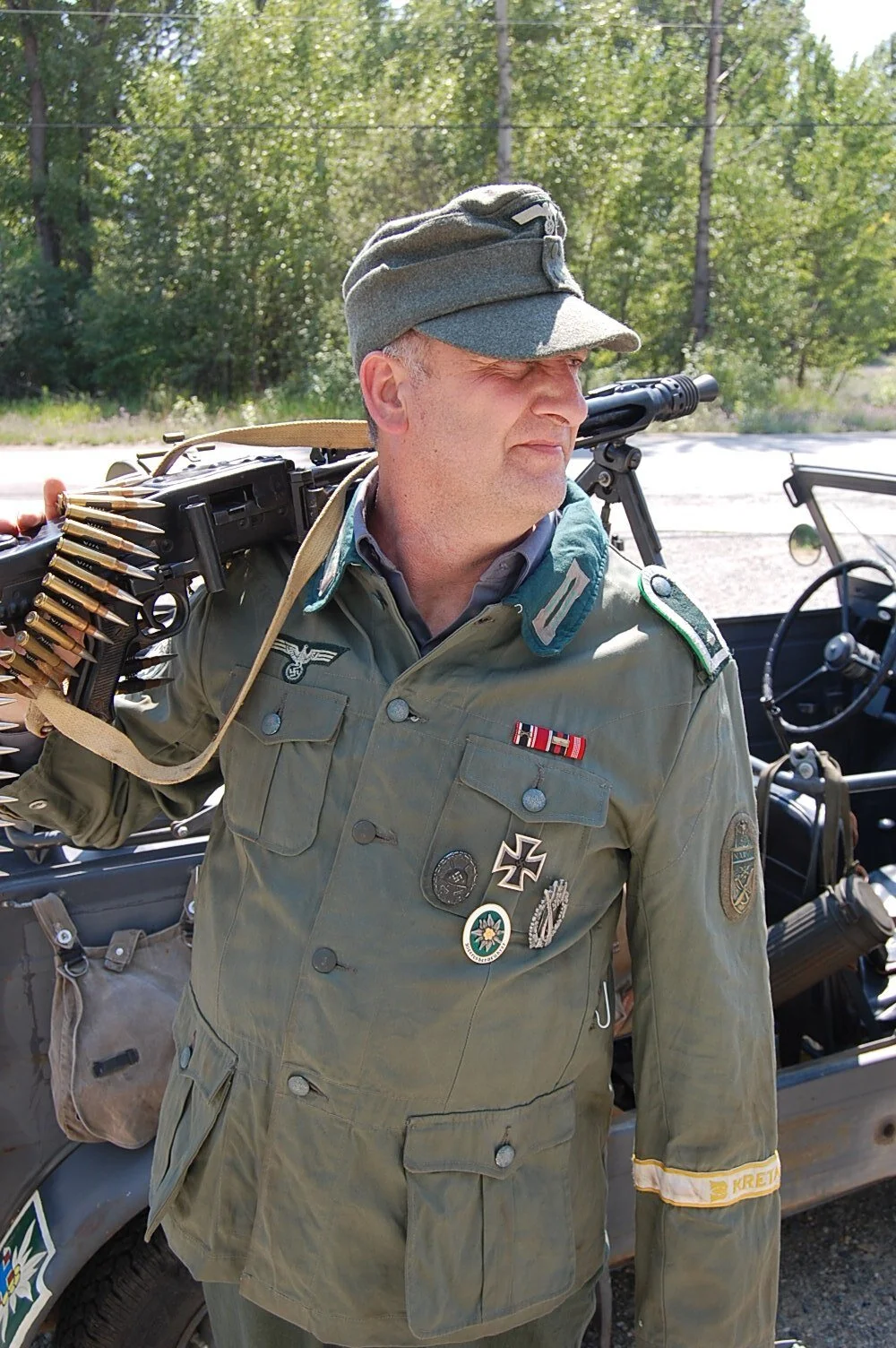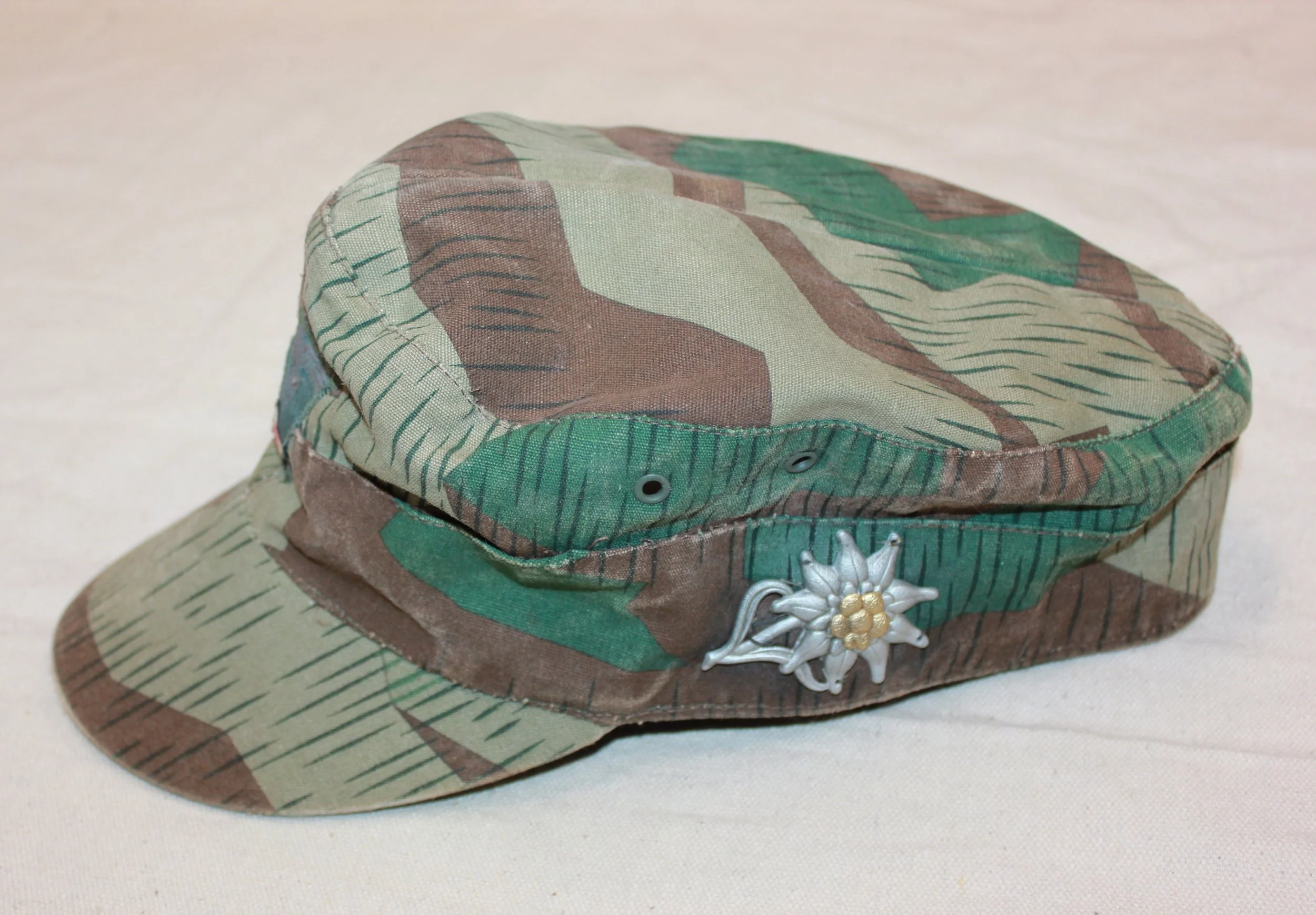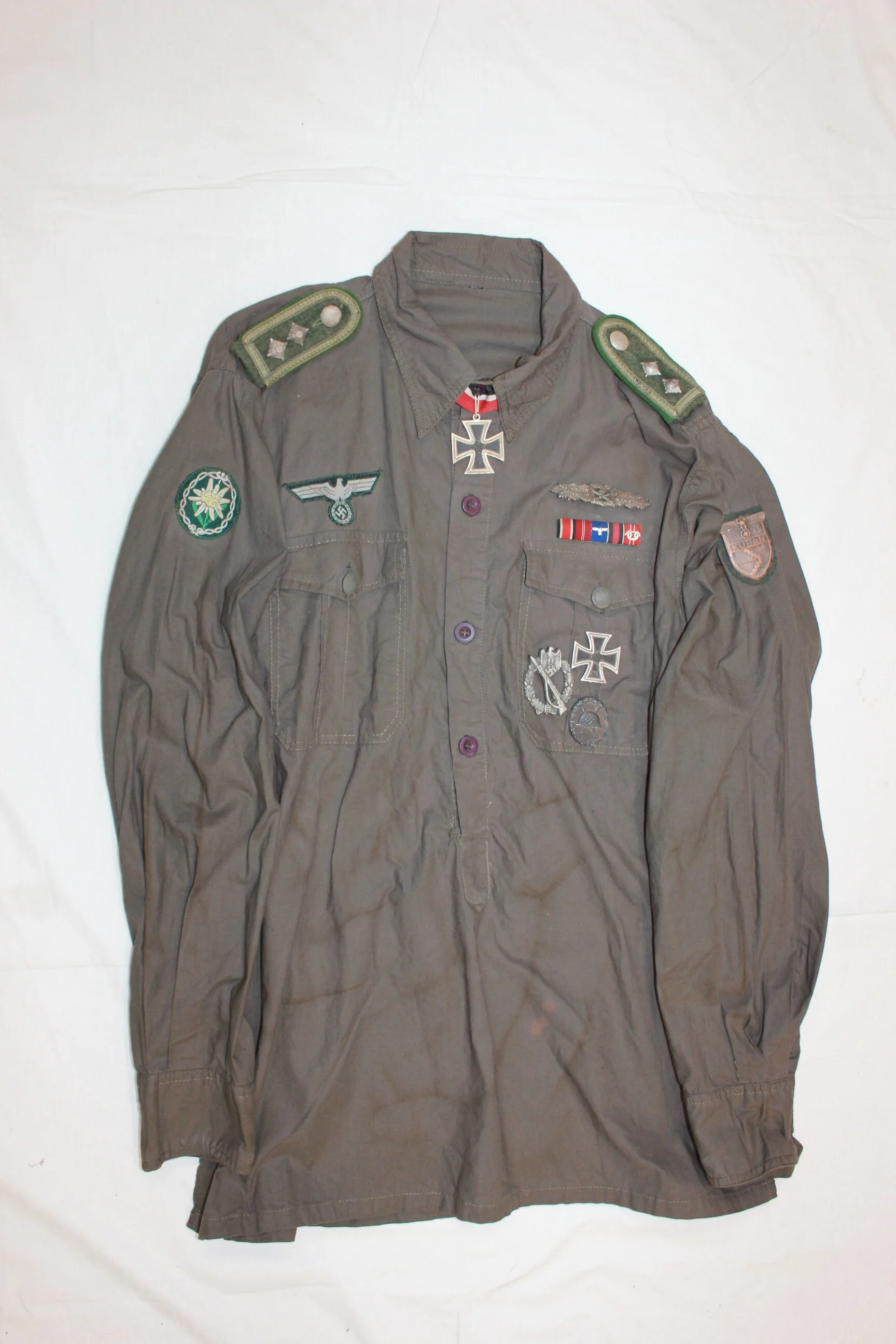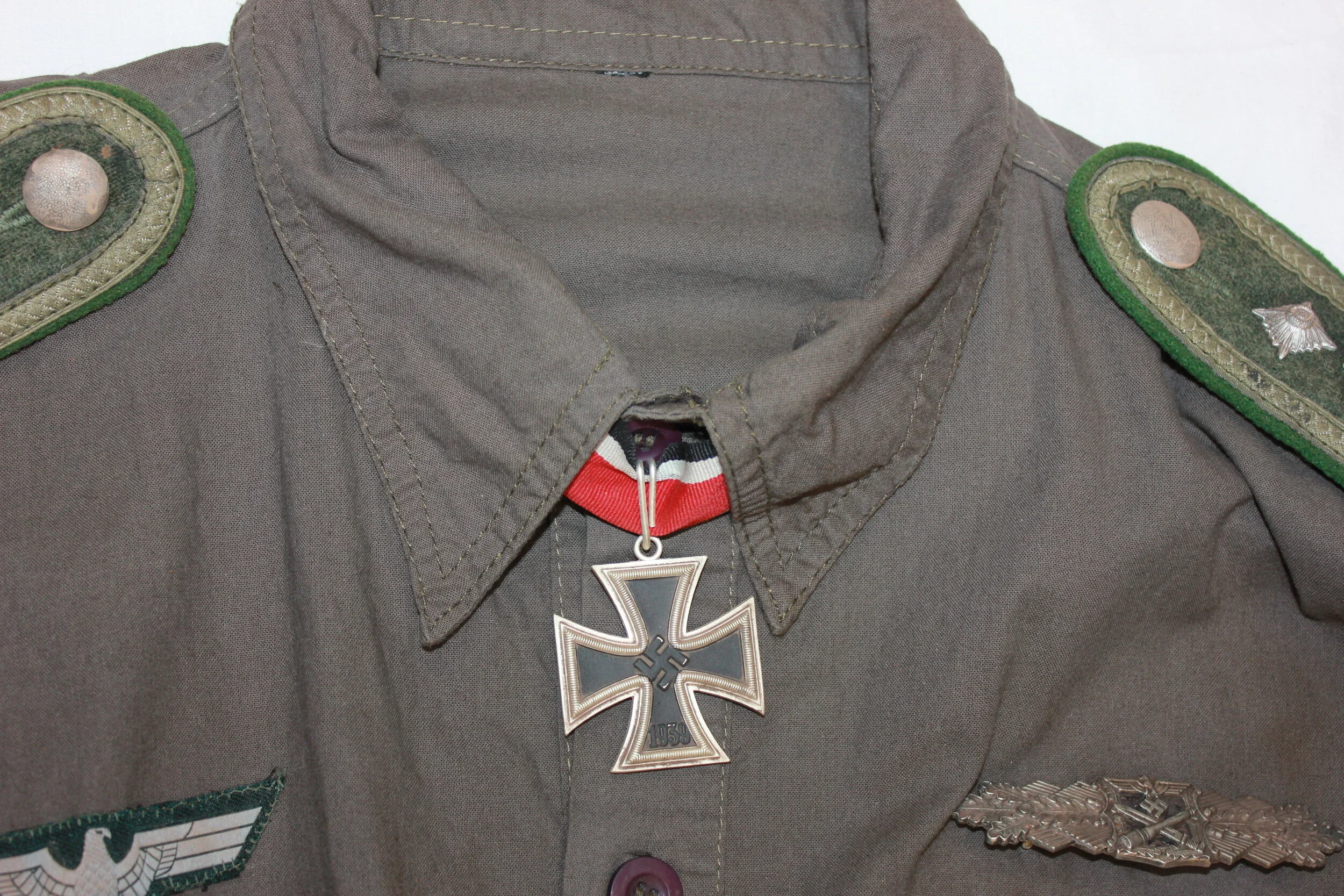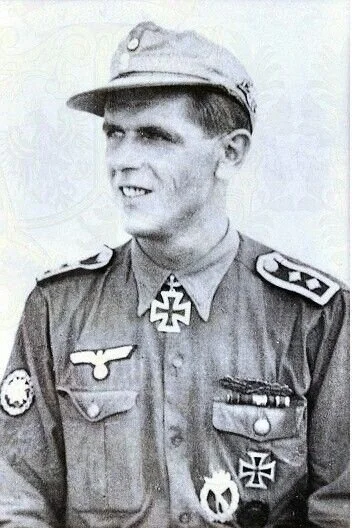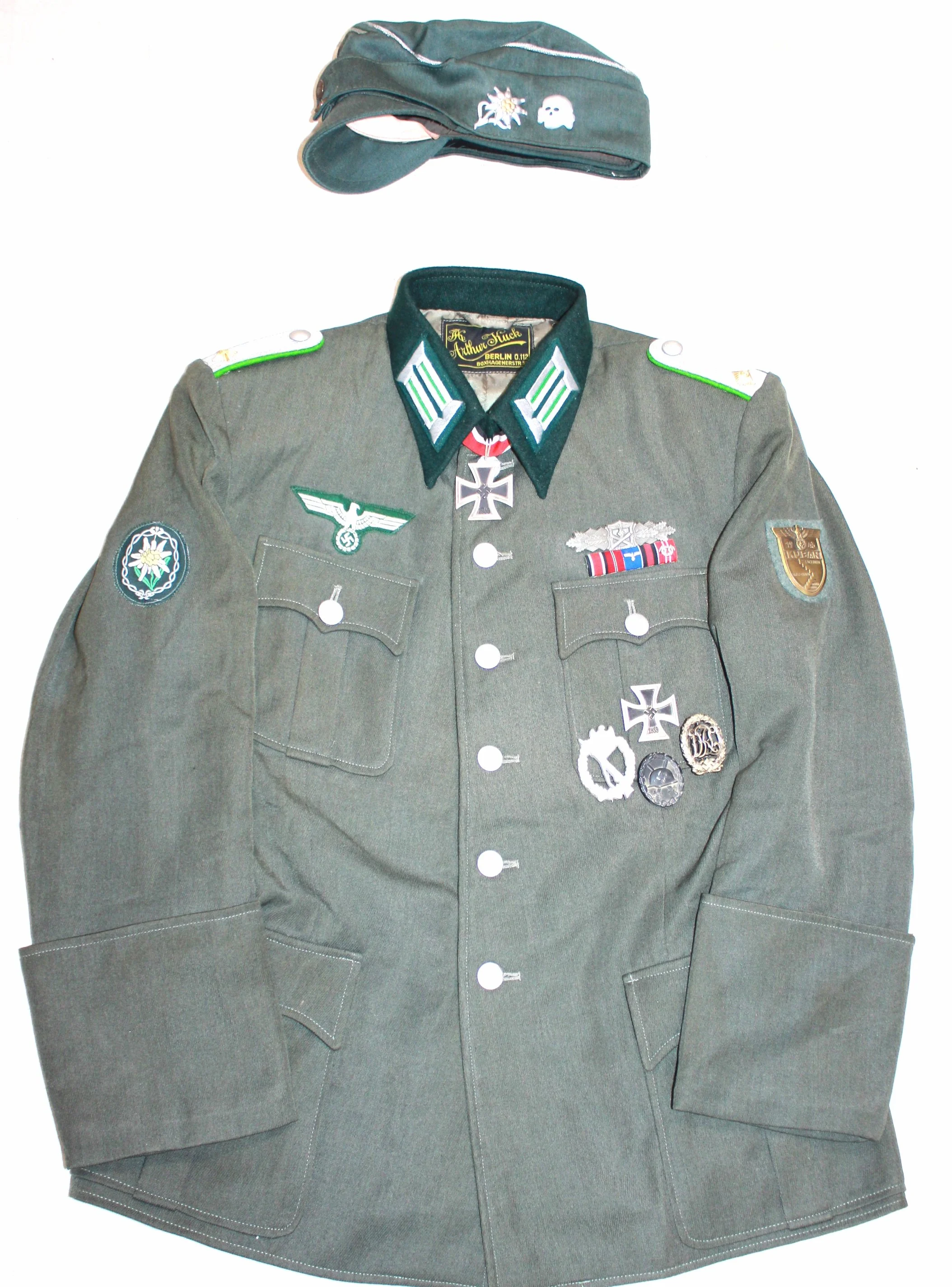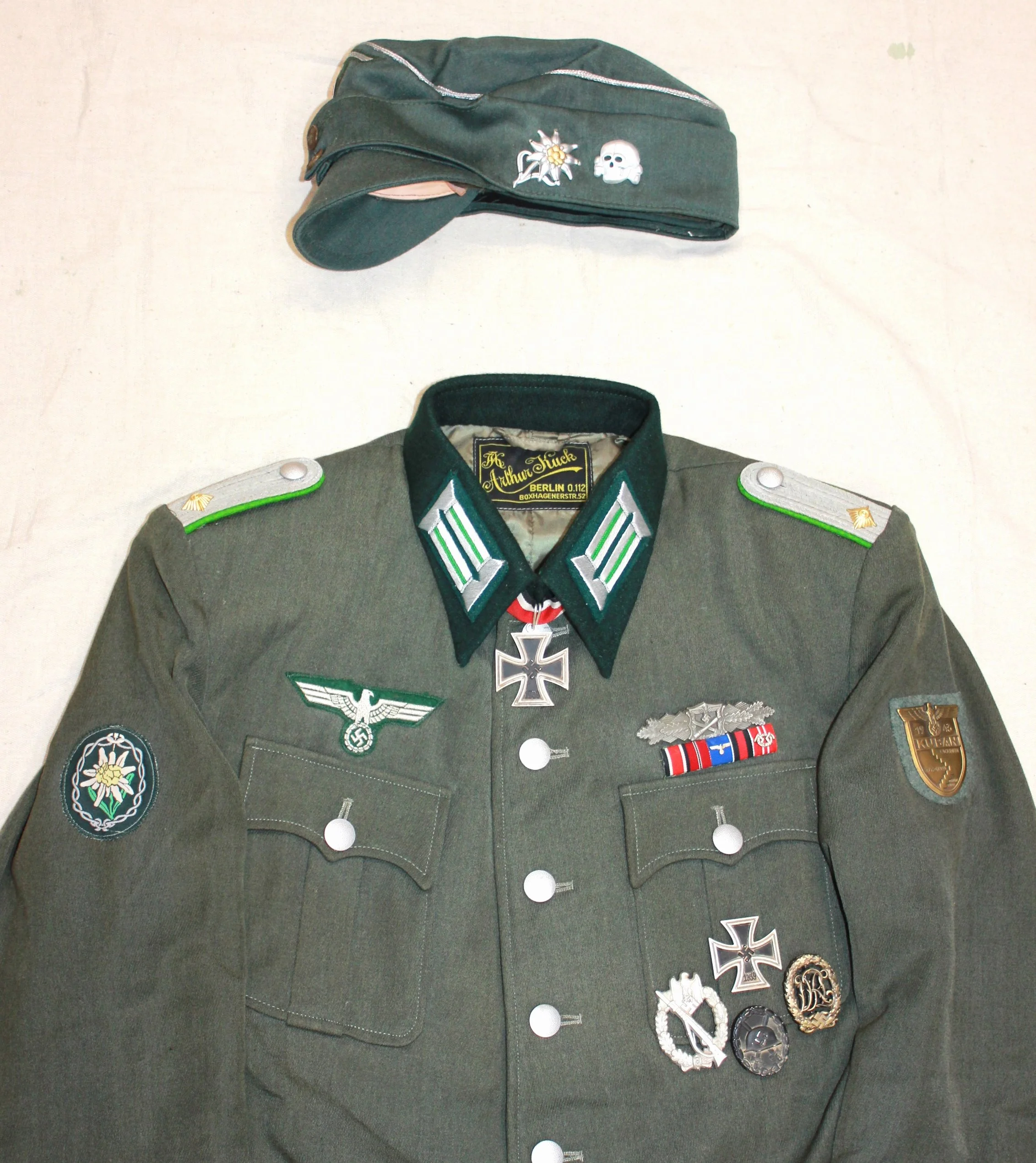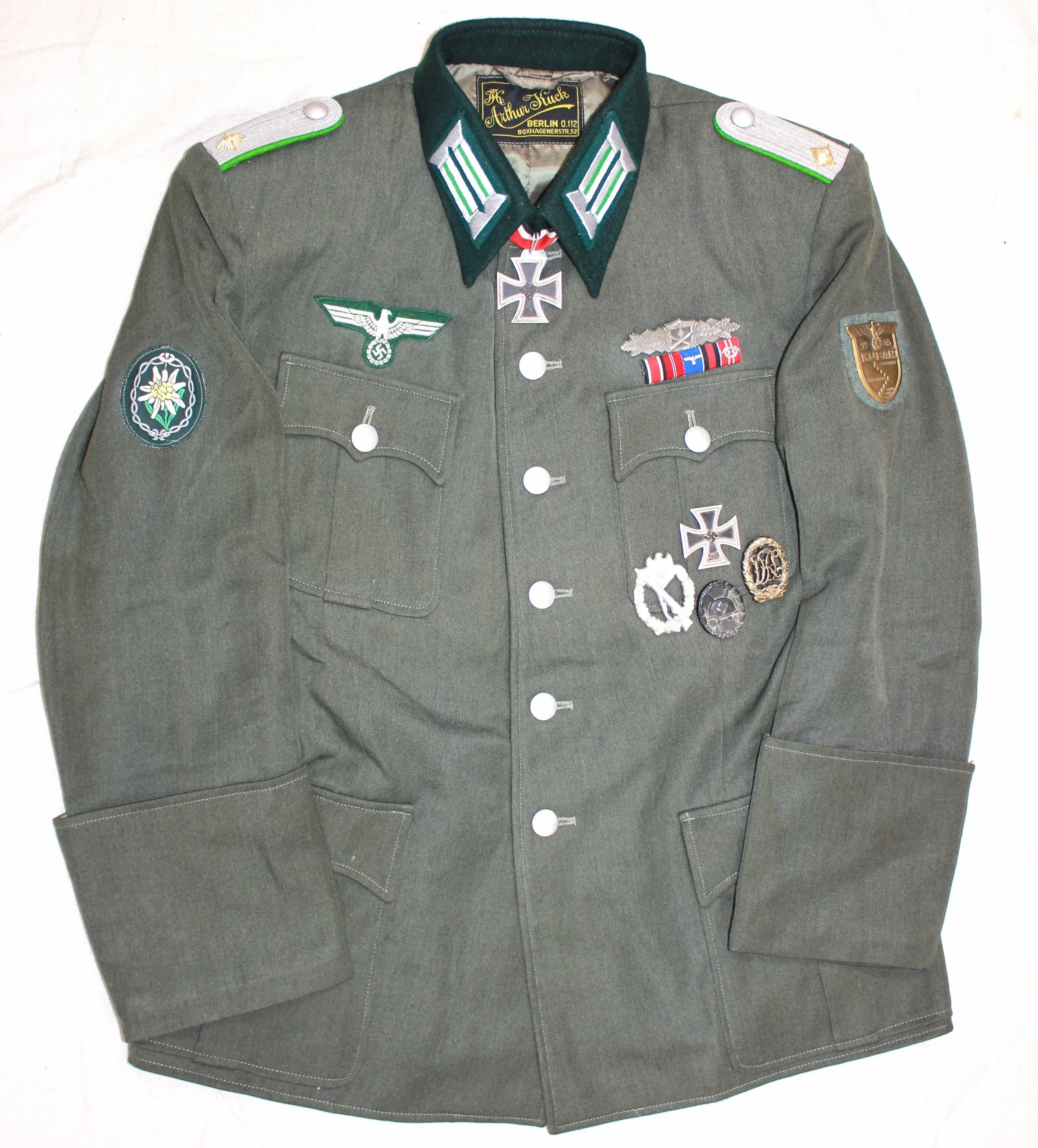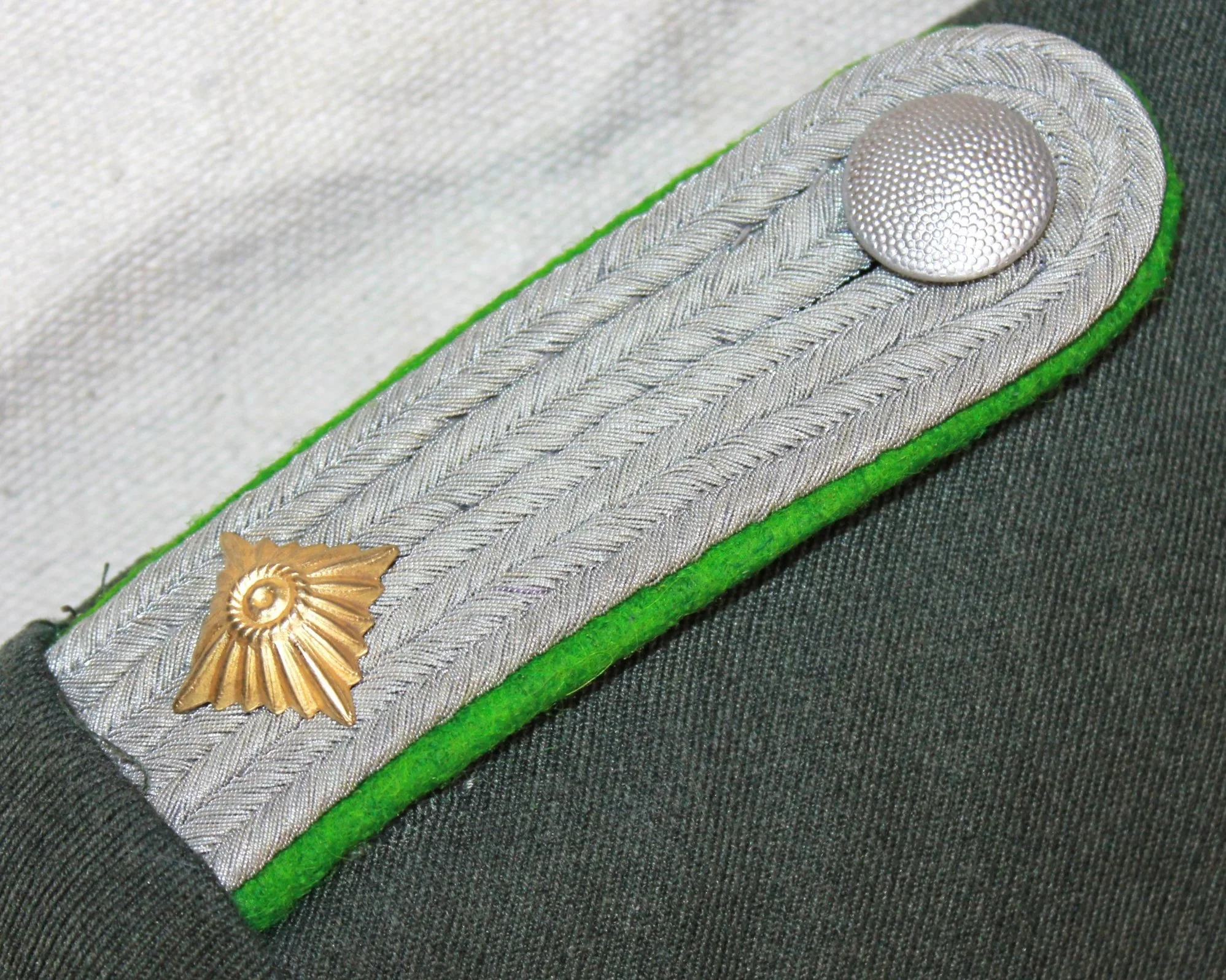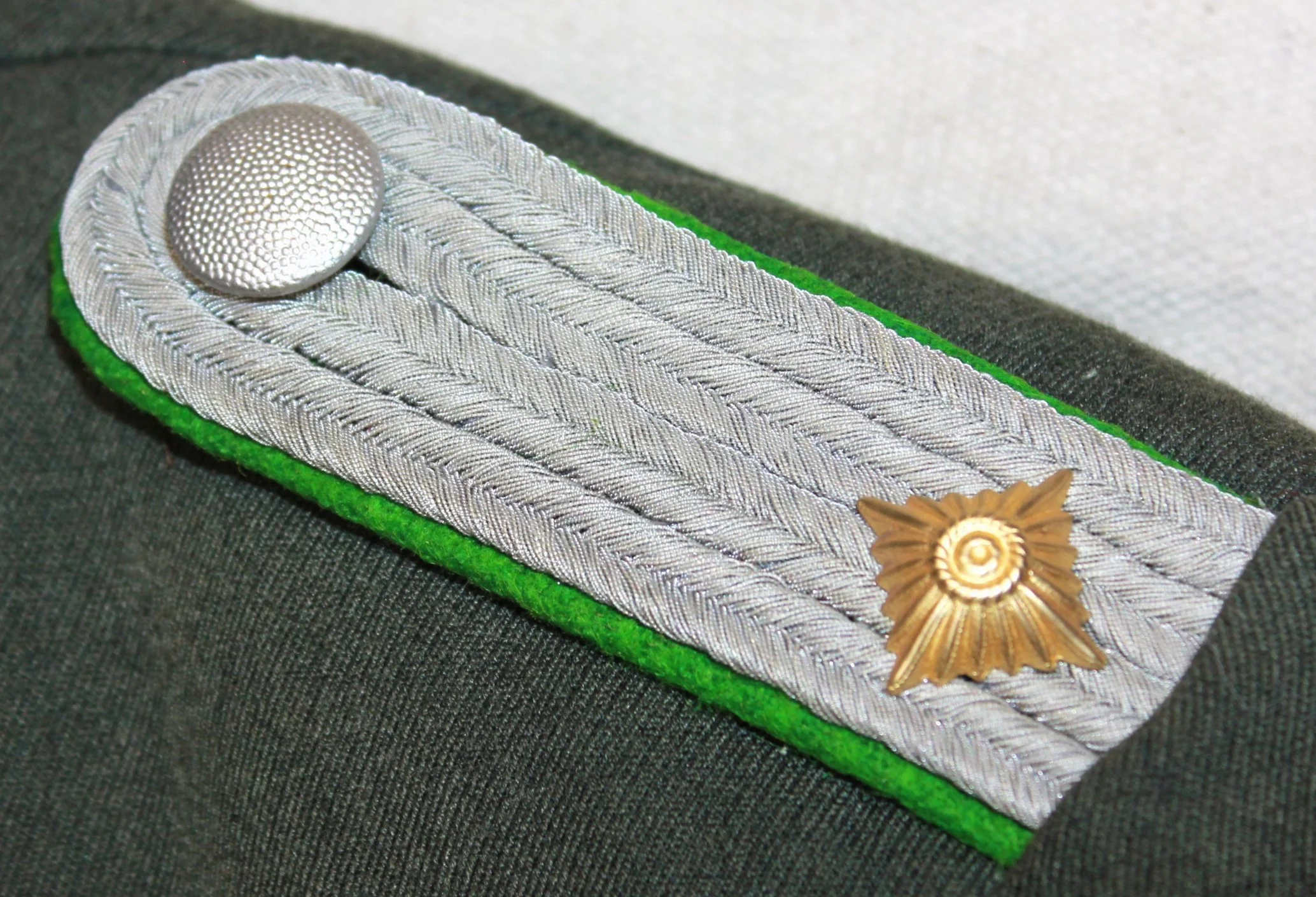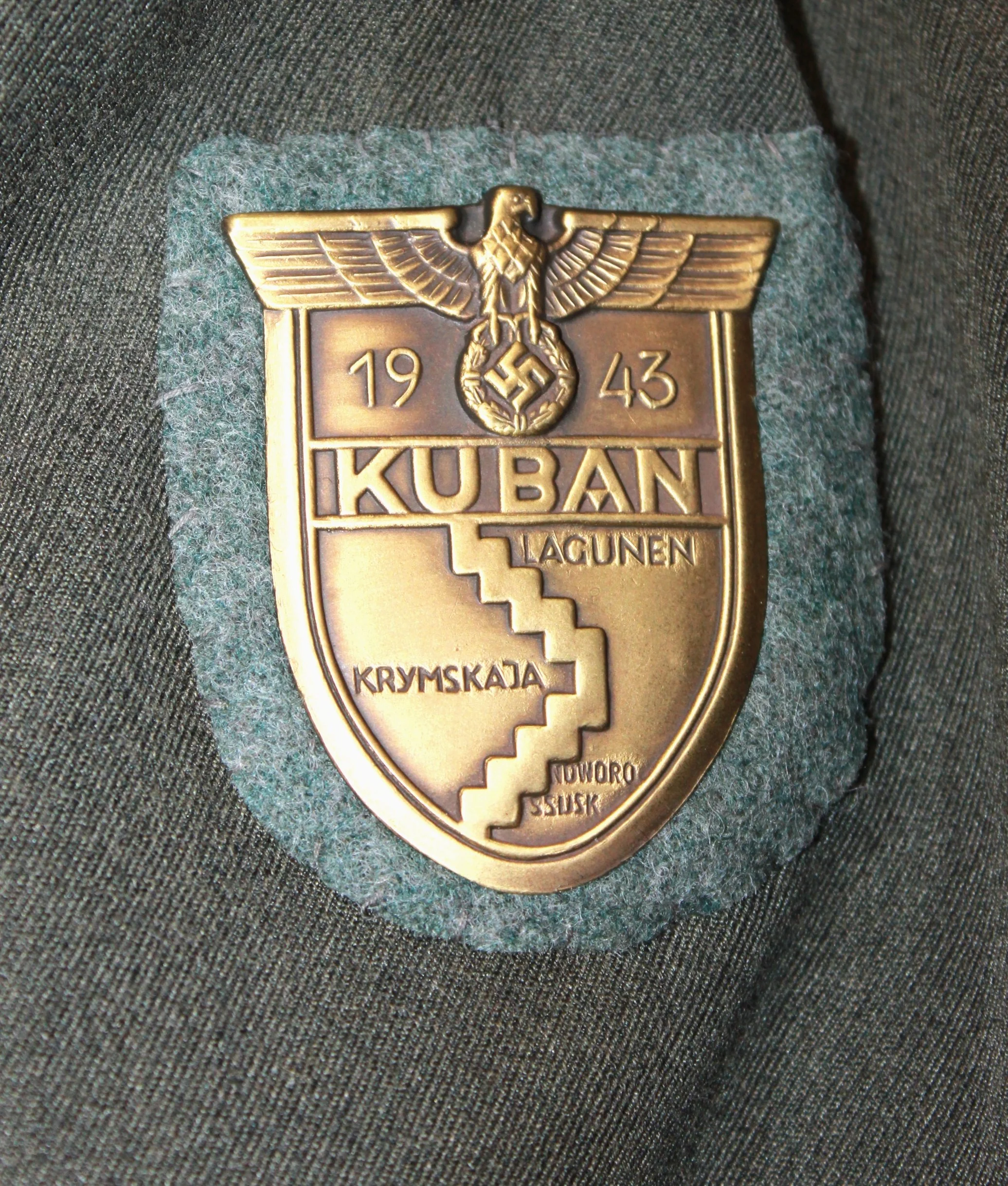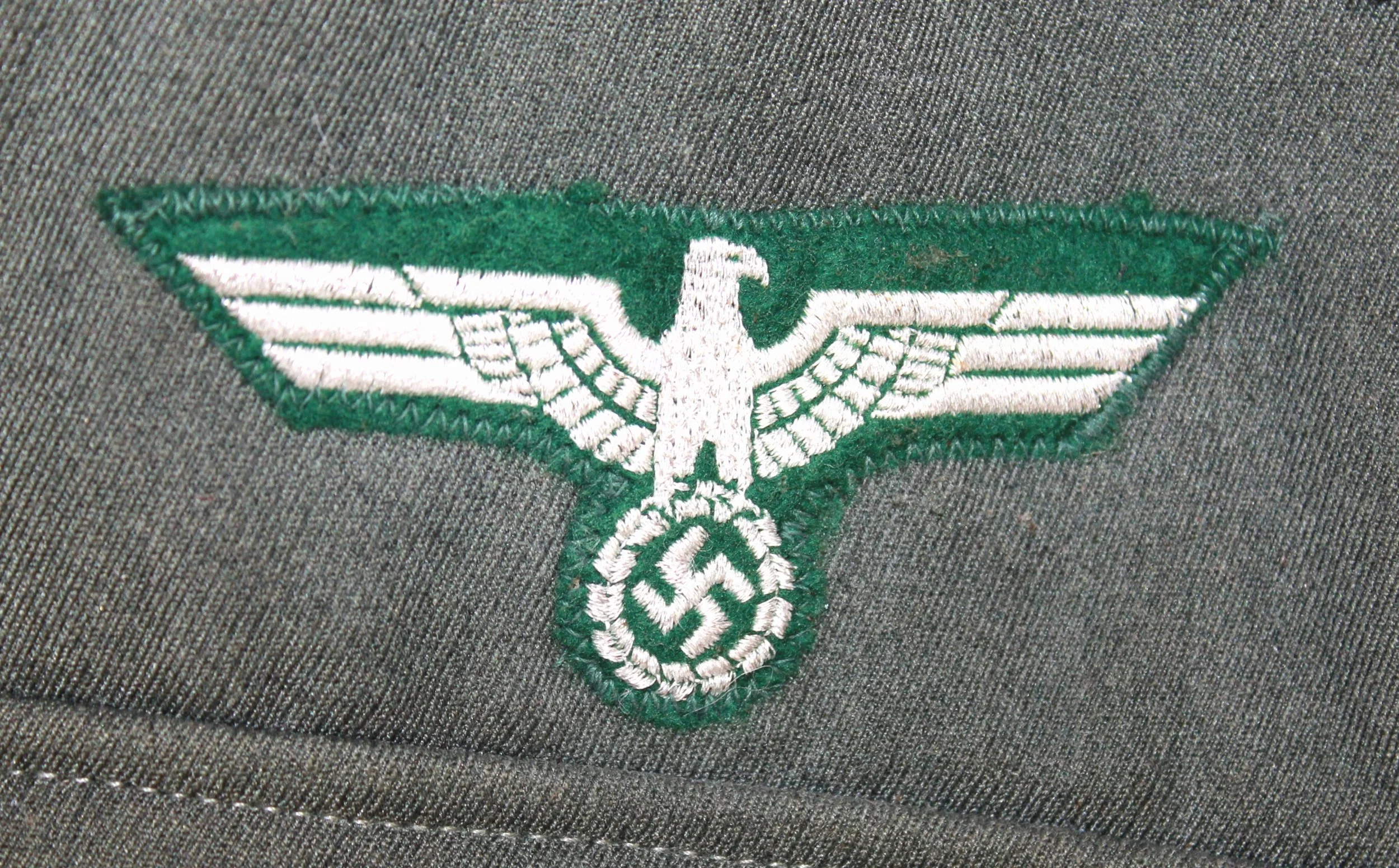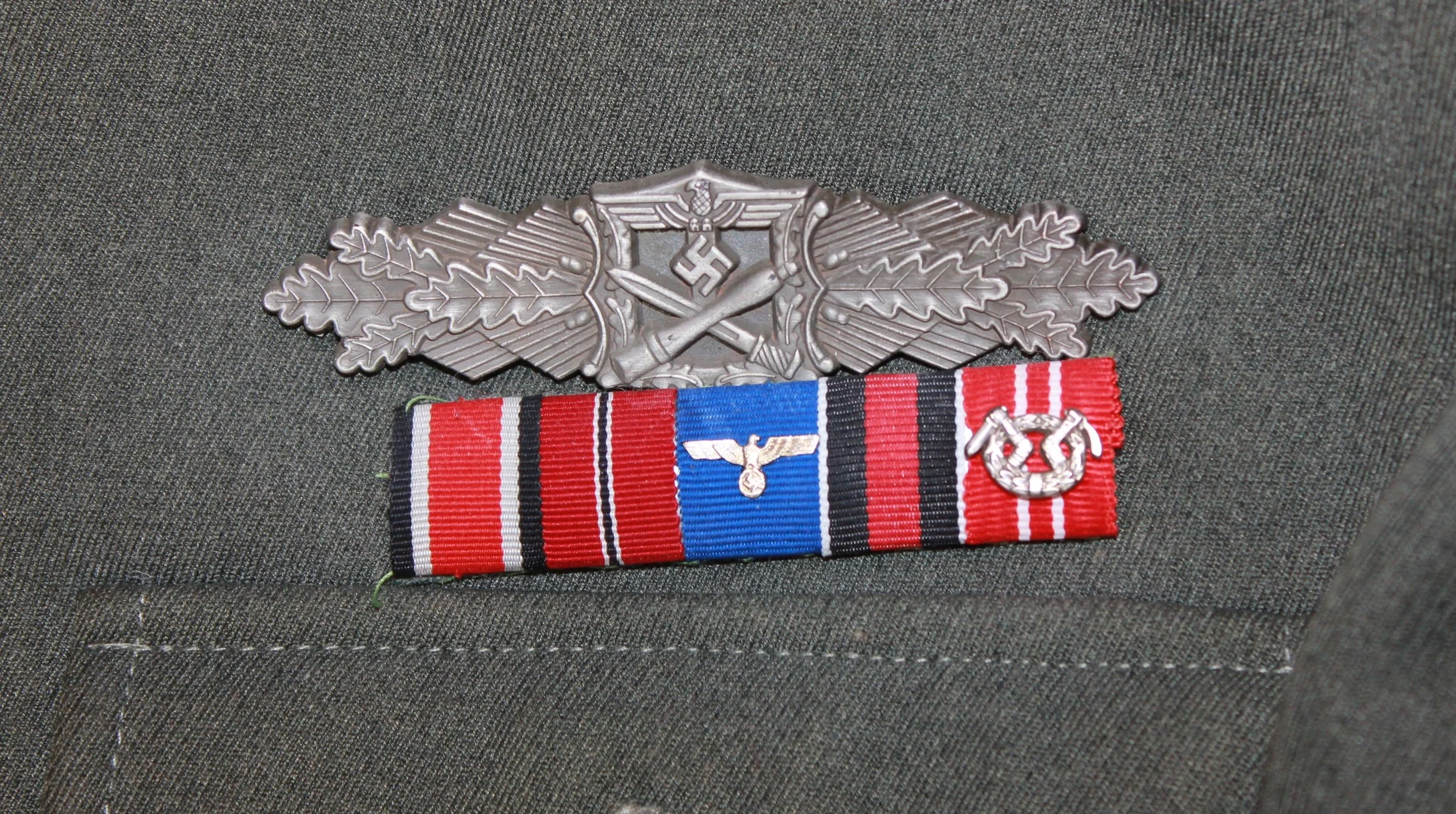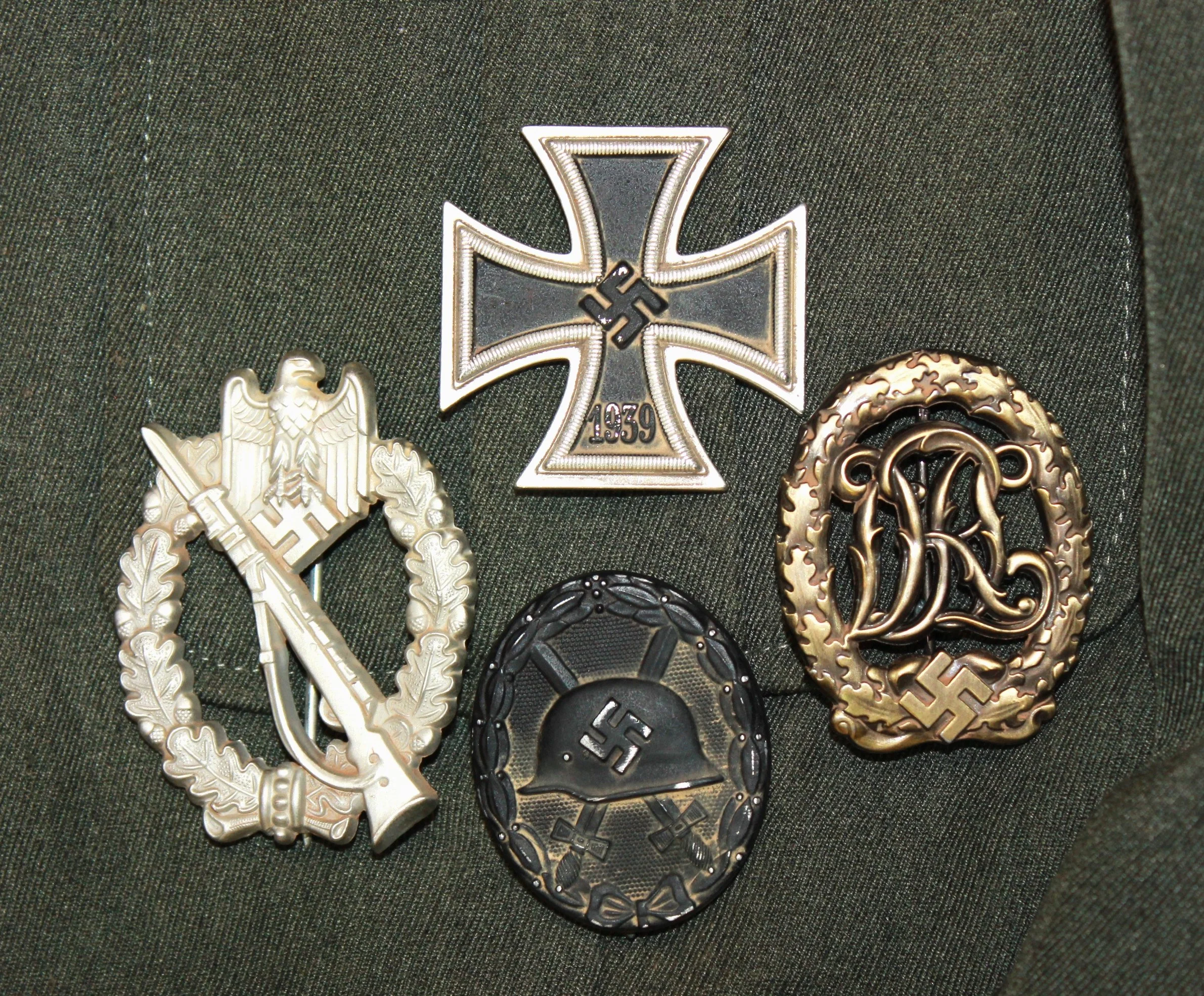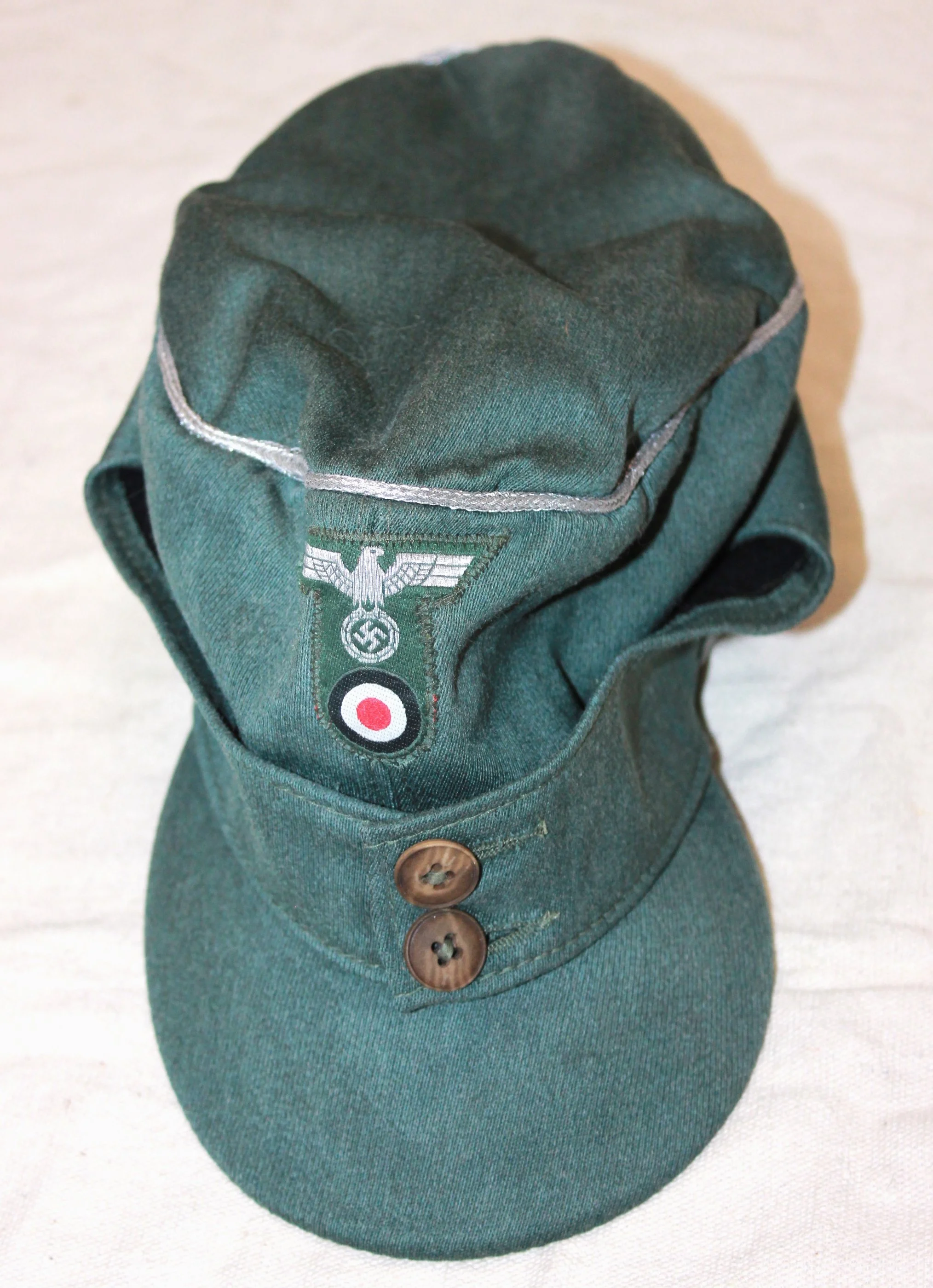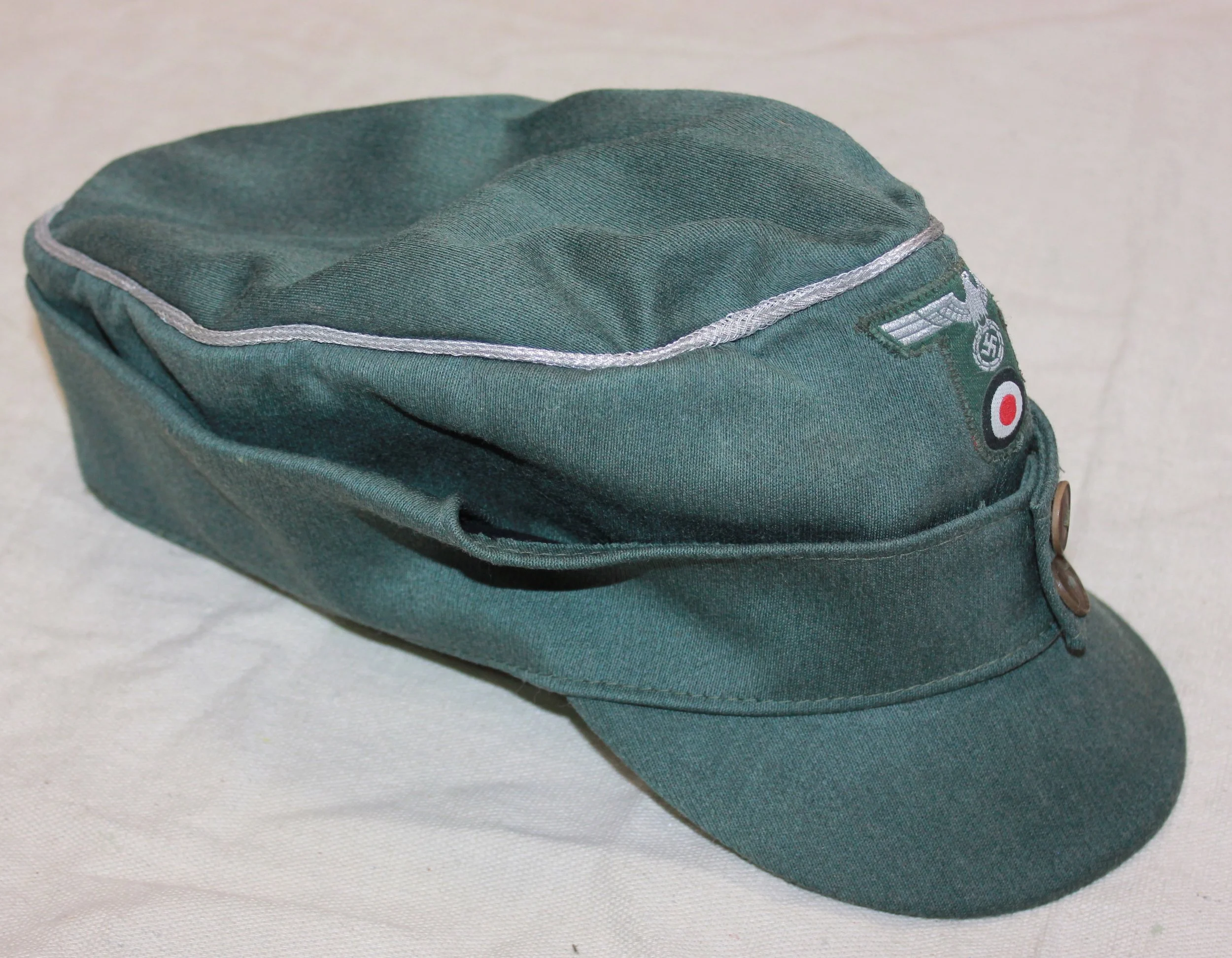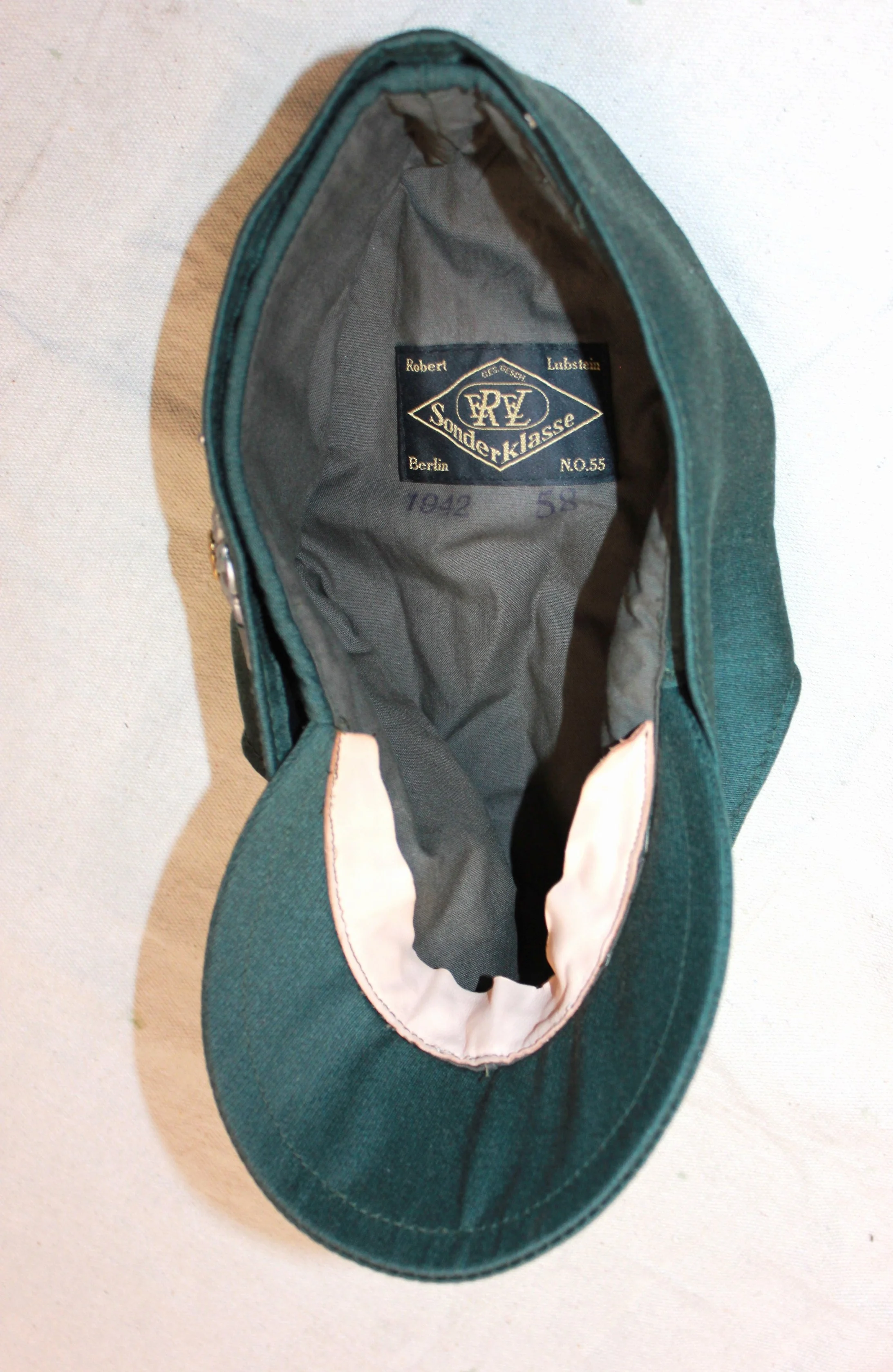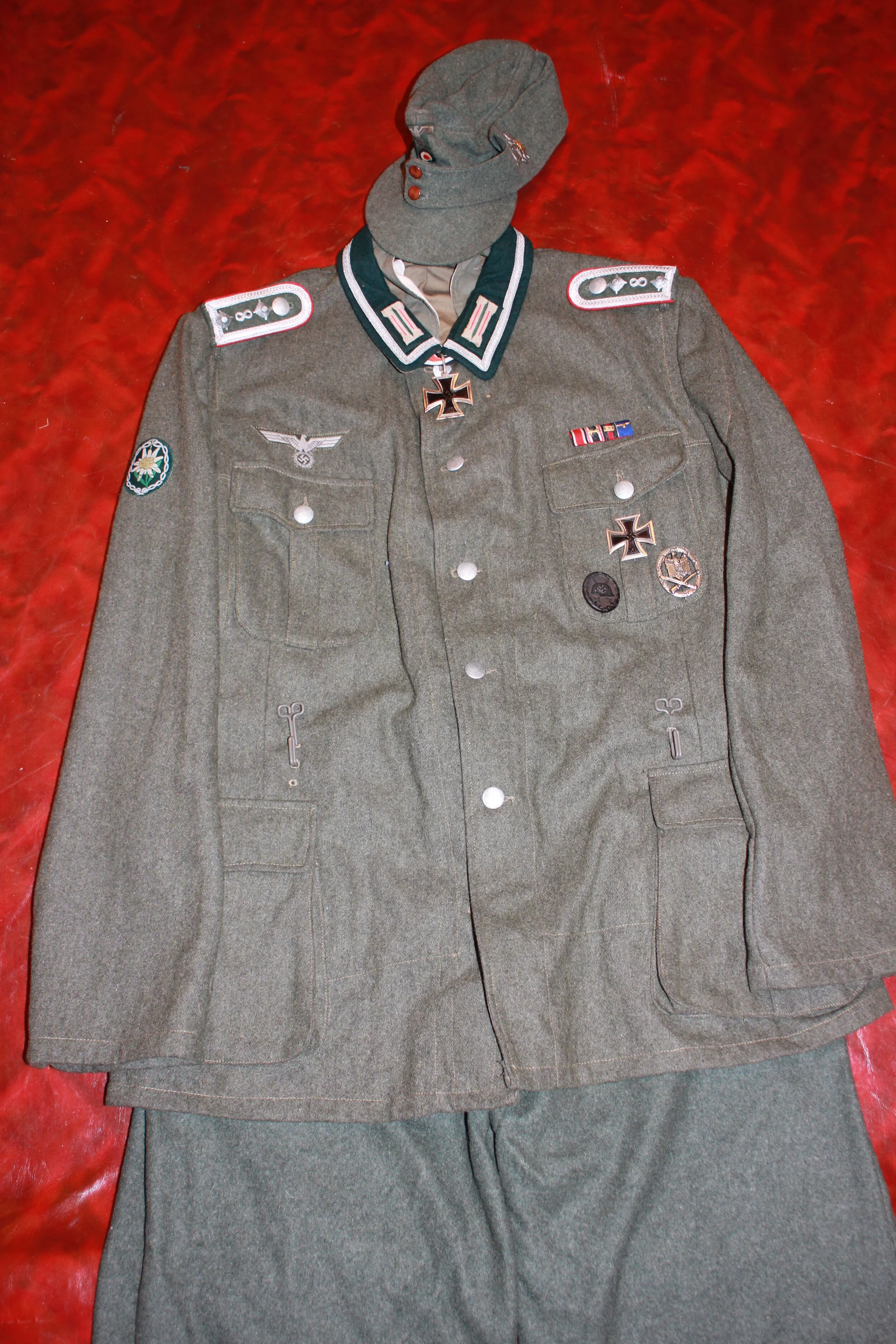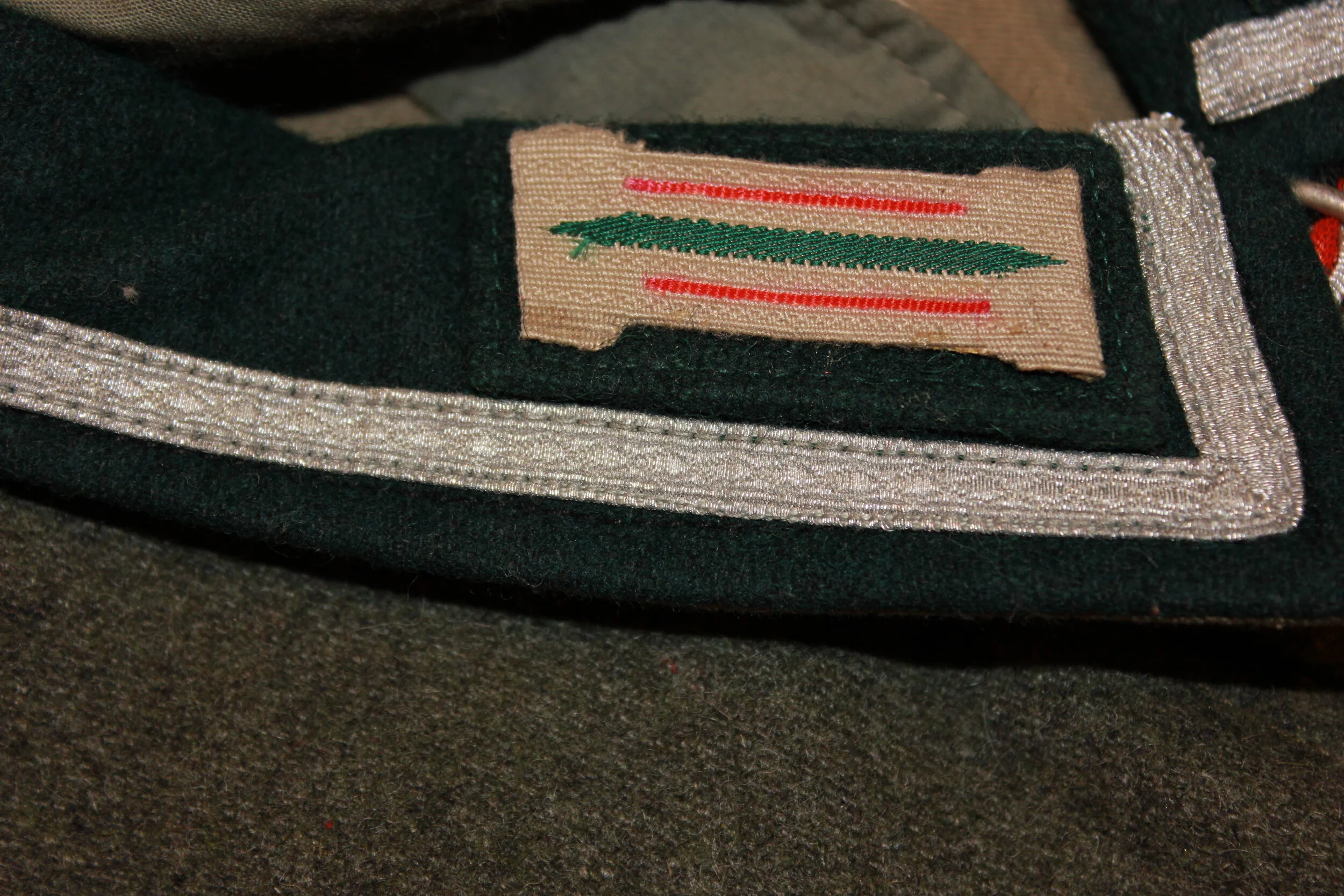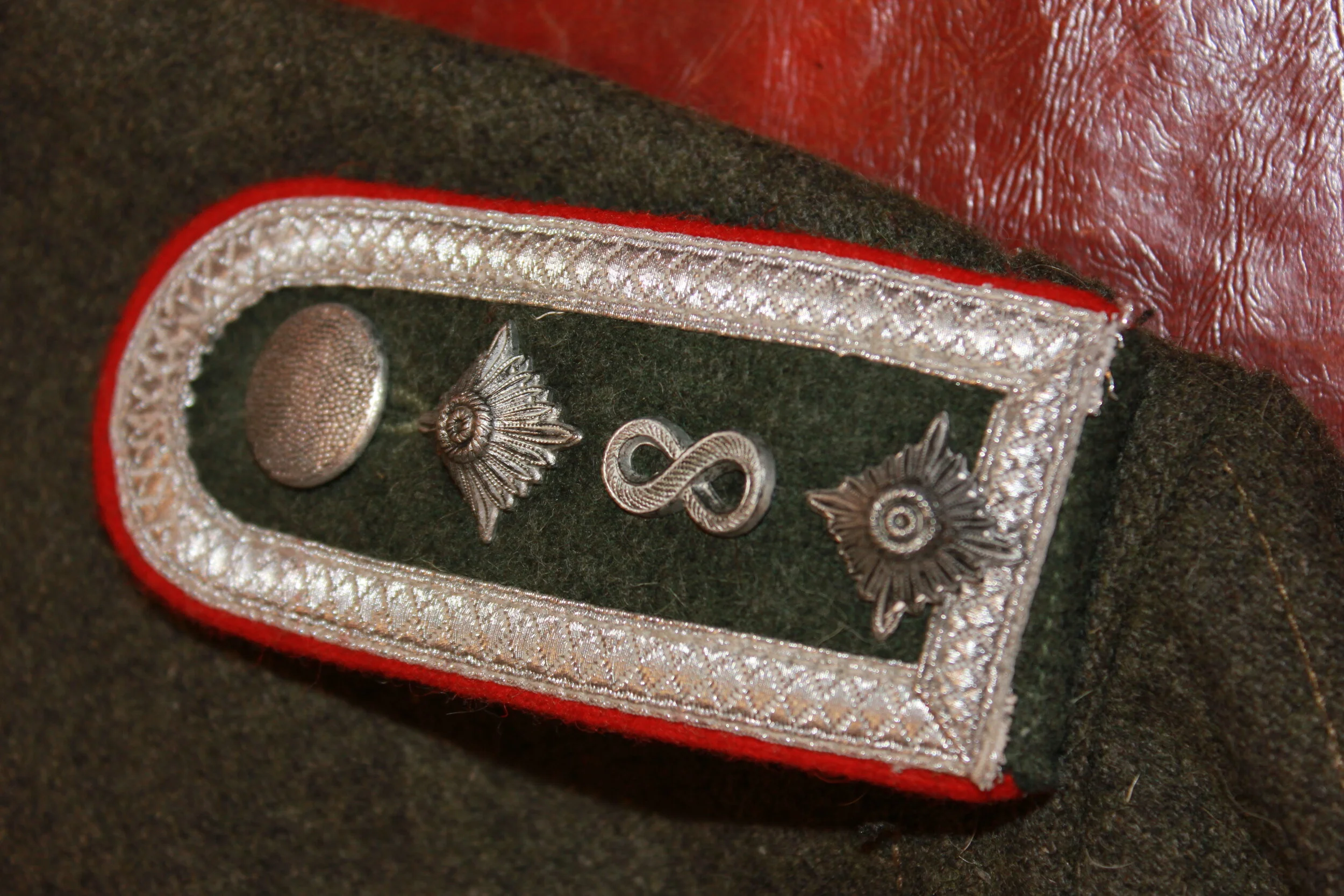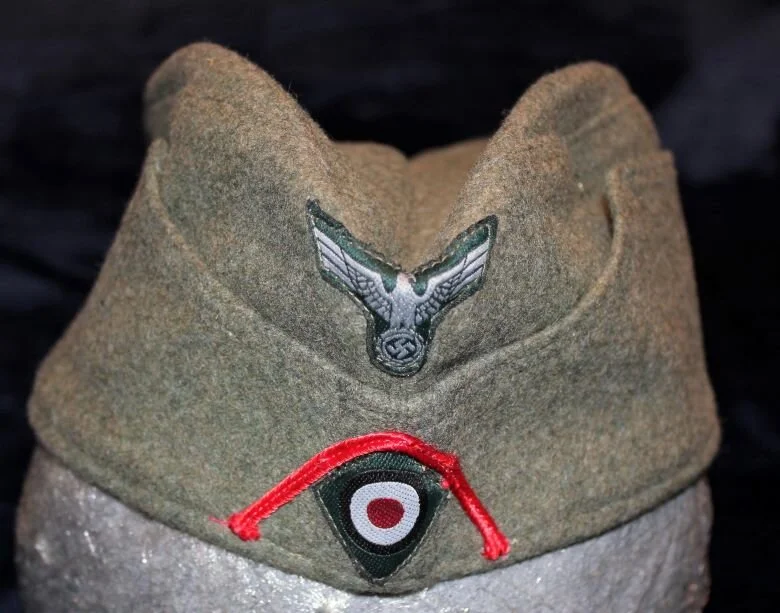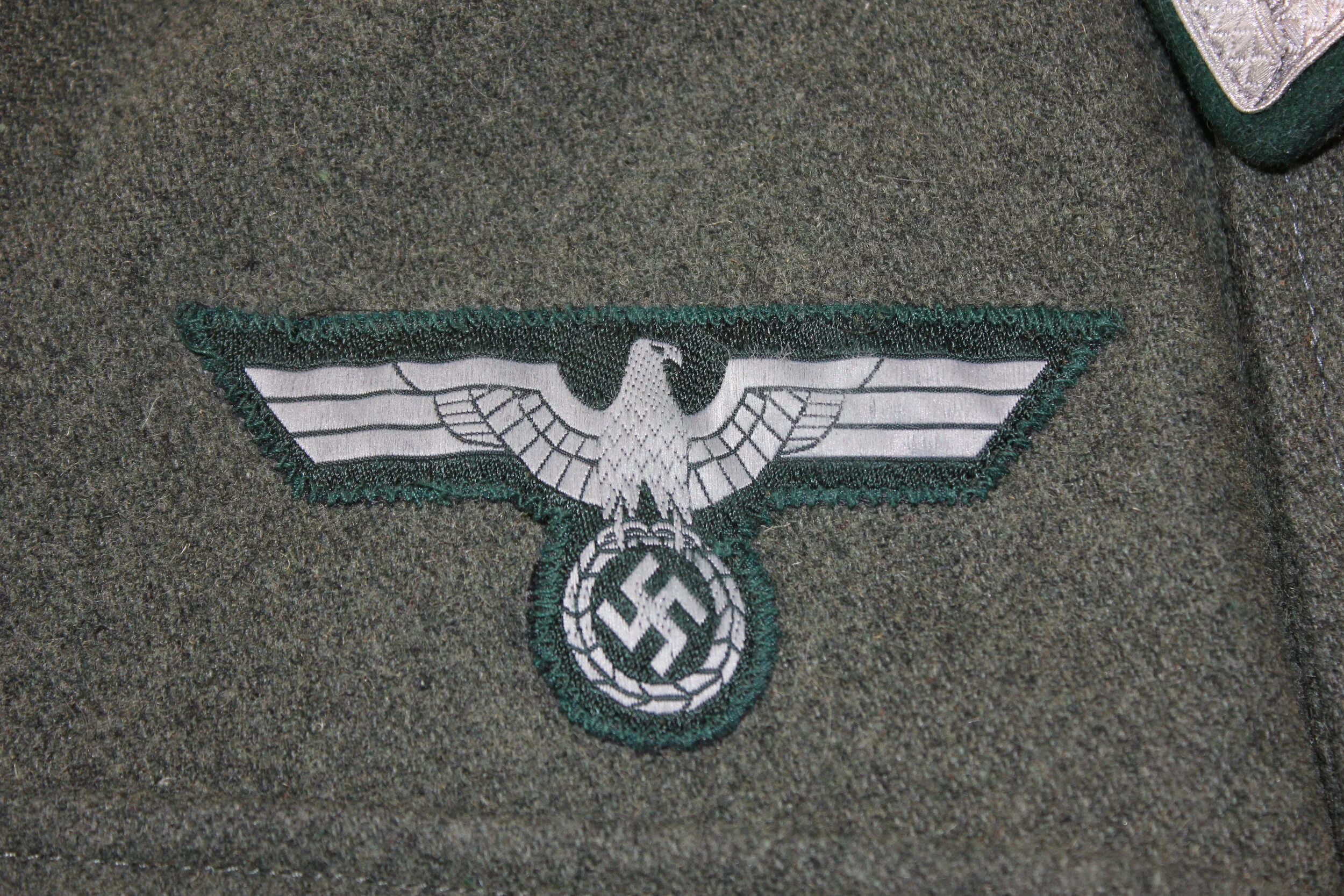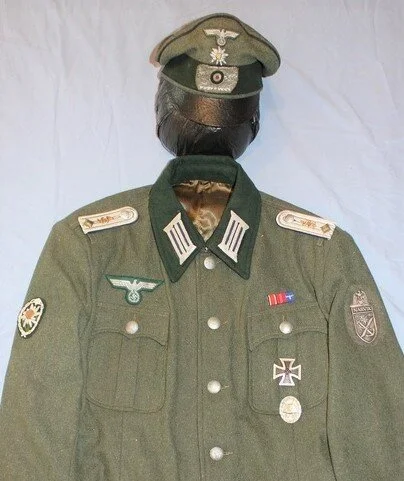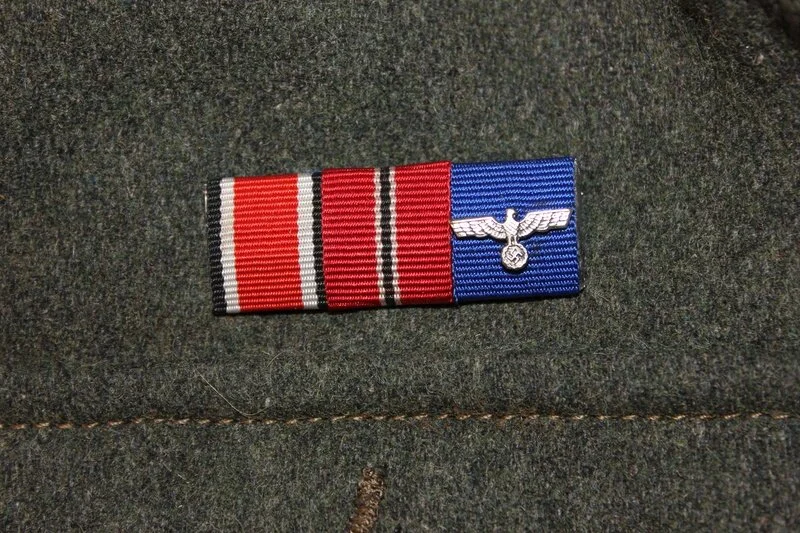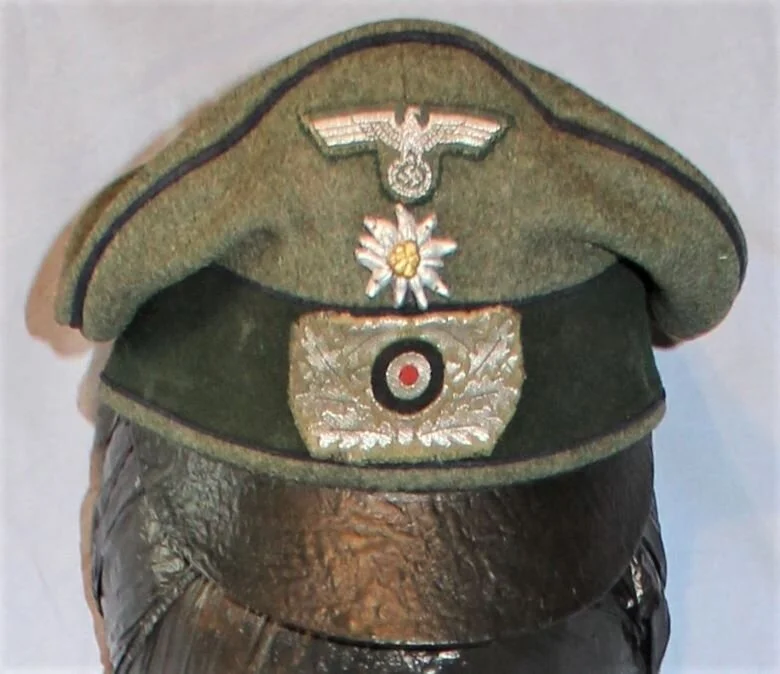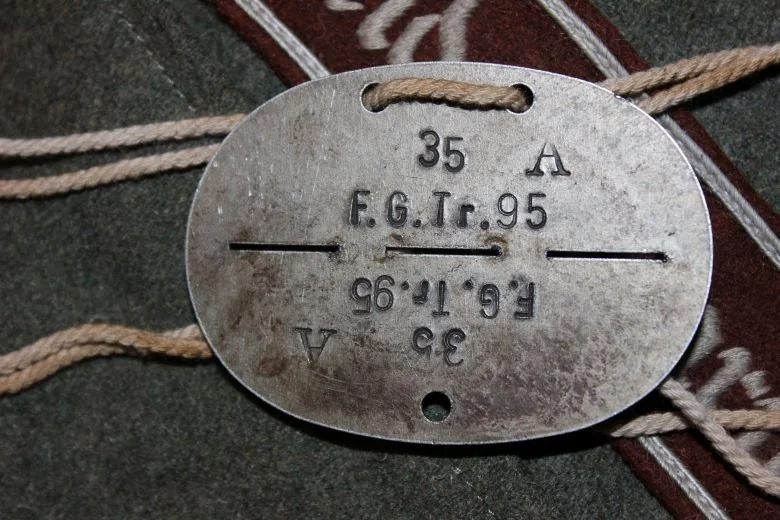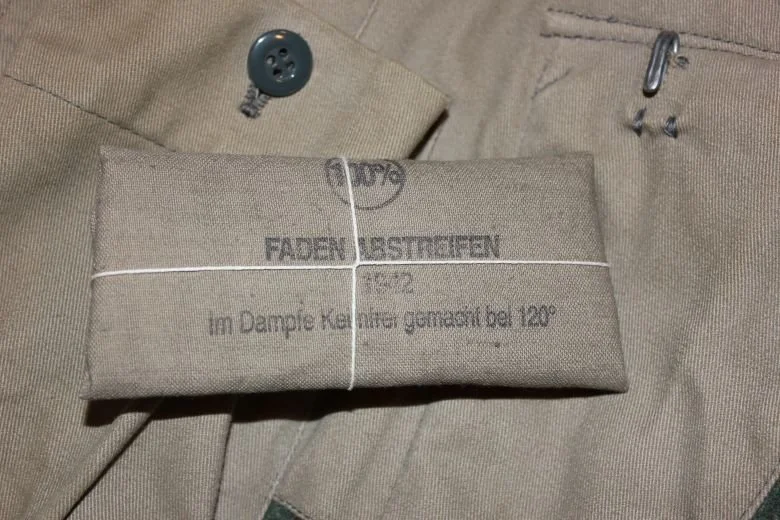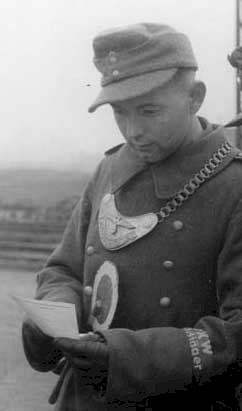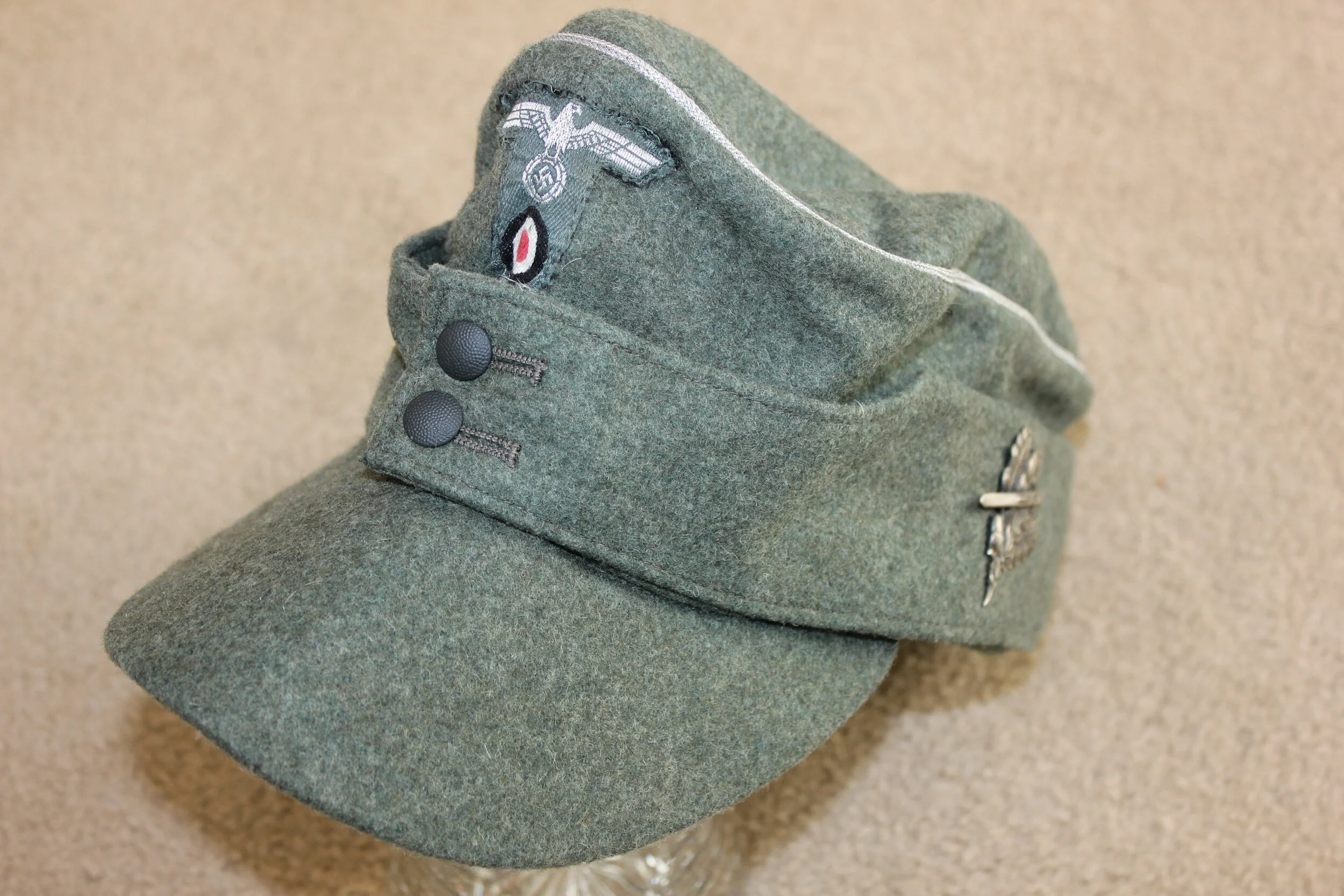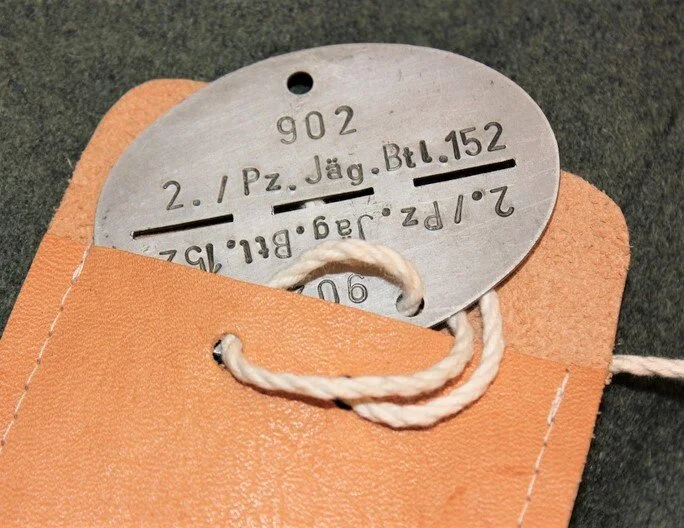Heer Gebirgsjager Troops:
Matthäus Hetzenauer & Josef Allerberger, Ritterkreuzträger, Gebirgsjäger Regiment 144:
This is a uniform set; look closely, it shows two different snipers who often worked as a team. The first is Matthäus Hetzenauer, an Austrian sniper in the 3rd Mountain Division on the Eastern Front in World War Two, credited with 345 kills. His longest reported kill was reported as 1100 meters.
Hetzenauer trained as a sniper from March 27 through July 16, 1944, before being assigned to the 3rd Gebirgsjäger Division. issued both a Karabiner 98k sniper variant with a 6x telescopic sight and a Gewehr 43 with a ZF 4x scope on it.
On November 6, 1944, he suffered head trauma from artillery fire and was awarded the Verwundeten-Abzeichen three days later. On multiple occasions, he served with fellow sniper Josef Allerberger, and between the two of them, many Soviet Soldiers fell.
Gefreiter Hetzenauer received the Knight’s Cross of the Iron Cross on the 17th of April 1945. Generalleutnant and Division commander Paul Klatt had recommended Hetzenauer because of his numerous kills, which in sum defeated two strong enemy companies without fear for his safety, under artillery fire and enemy attacks. This recommendation was approved by General der Gebirgstruppe Karl von Le Suire and General der Panzertruppe Walter Nehring. Hetzenauer was captured by Soviet troops the following month, eventually, he served 5 years of routinely appalling conditions in a Soviet Prison camp.
He passed away on October 3, 2004, after several years of deteriorating health.
Then there was Josef ‘Sepp’ Allerberger an “Austrian” sniper in the II Bataillon of the 144th Gebirgsjäger Regiment, of the 3rd Mountain Division, and also was on the Eastern Front, he was credited with 357 confirmed, but hows to say how many during a Russian assault were hit, but not confirmed, this too could easily be hundreds.
Sent to the Eastern Front in June 1943 as a machine gunner, Allerberger was lightly wounded at Stavropol and experimented with a captured Soviet Mosin Nagant 91/30 rifle with a 3.5x PU telescopic sight whilst recuperation. Eventually, he made 27 kills before he was sent to sniper training at Seetaleralpe, and assigned a Karibiner 98k sniper variant, with the accurized barrel, and a 4x telescopic sight on it. By the end of the war, he would often use a Gewehr 43 with a ZF4 4x scope on it, and an MP-40 sub-machinegun for close range.
During combat, Allerberger was noted for using the Wehrmacht thought technique of an umbrella with the cloth removed and foliage woven into the arms, which he held to his front to camouflage himself. It was light, simple and quickly deployed, and adaptable to many circumstances.
He was reportedly awarded the Knight’s Cross to the Iron Cross by Ferdinand Schörner, the Commander of Armee Group Center, on 20 April 1945. Although no official documentation was ever recorded of the award. However, this was uncommon at that late part in the war.
In 2005, a book titled Sniper on the Eastern Front: Memoirs of Sepp Allerberger, Knight’s Cross was published, written by Albrecht Wacker based on interviews with Allerberger.
After the War, Allerberger worked, like his father, as a carpenter. He passed away on 2 March 2010 in Wals-Siezenheim. He said that at about 1,000 meters he could shoot a standing soldier. Confirmation was not possible, but it was necessary under the circumstances to show the enemy that he was not safe even in his lines, even at that distance my superior, wanted to satisfy himself about our capability. The 98k Rifle was the weapon of choice, and the only thing available at any rate. However, the G43 was only suitable out to 400 meters, its accuracy was much inferior to the 98k Precision.
There is a lot more to these two men’s stories, and the uniforms will keep the rest of it written on papers in the uniforms’ pockets. I just don’t have the time or room to add it all here. It’s an interesting story, though, alright.
Feldwebel, Gebirgsjager, (Summer-Weight Uniform):
Representing a Gebirgs NCO in approximately 1943, this custom-cut M36 uniform shows an experienced sergeant. Highly skilled in the mountains, proven by the award of the Heeresgebirgsführer badge, this soldier fought in Norway as part of a special group dropped by parachute and then again in the bloody battle for Crete.
His ribbons bar tells its own story, the one that came with the uniform fell off somewhere, and this one replaced it at some point. It has on it the War Merit Badge with Swords, Anschluss Medal, Prague / Poland Medal, and the Olympic Games Medal.
The Gebirgs branch piping color is jaeger green, as they are light infantry troops. On his right sleeve is the badge of the mountain troops, the edelweiss surrounded by a coil of climbing rope held with a piton.
He wears field or stone gray trousers that would be worn with climbing boots wrapped with ankle leggings or putties. On his head is an M43 field cap conversion with the traditional T-shaped insignia used on the Bergmutz and the metal cap Edelweiss sewn to the side.
Gebirgsjager, Splinter Camo. Custom jacket, NCO:
This is a somewhat rare custom uniform that was not issued to the Gebirgsjager, nor by the infantry., for that matter. It is a custom-cut late-war M44-patterned jacket.
The M44 style jacket was said to be quite popular, maybe just being the “new” style, not unlike the English battle jacket, and the US (English copy) Ike Jackets, used as a general dress uniform (or Class A). These were made by cutting up their shelter quarters, and worked pretty well, some times you might see where scraps were sewn together to make enough material, but so it went, the local tailors were kept busy and happy, but it was more common for the see the 4 pocket pattern, albeit short 2 pockets sometimes, this would make more sense for the use of limited material.
He saved enough to make a cap for the uniform, as well, he may have had HBT trousers. The uniform has a story, but I’m not finding it. I can tell ya, the uniform carries the traditional Heer insignia, though by this time, it was not supposed to be applied to camouflaged uniforms; it was common practice, one didn’t want to be questioned by a nervous guard.
Ritterkreuzträger Hauptmann Carl Rall, 11. Kompanie Gebirgsjäger Regiment 98, 1. Gebirgsdivision:
Hauptfeldwebel Carl Rall was awarded the Ritterkreuz 30. January 1943, during the 1. Gebirgsdivision’s fighting withdrawal from the Caucasus region to the Kuban-Brückenkopf. Rall was later promoted to officer rank, reaching the rank of Oberleutnant by the end of the war.
1. Gebirgsdivision was raised in Garmisch-Partenkirchen in 1939 from a Gebirg-Brigade filled with Bavarian and Austrian troops. The division was in action from Poland to the Balkans. One of the best-known exploits was the ascent of Mount Elbrus in August 1942 and the subsequent defense of that summit against Red Army advances. With the rest of the German forces in the Caucasus region, the division fought a withdrawal action towards the Kuban Bridgehead starting in February 1943.
The Kuban-Brückenkopf was a German position on the Taman Peninsula, Russia, between the Sea of Azov and the Black Sea. Existing from January to October 1943, the bridgehead was formed after the Germans were pushed out of the Caucasus. The heavily fortified position was intended as a staging area for the Wehrmacht, which was to be used to renew attacks toward the oil wells of the Caucasus.
The bridgehead was abandoned when the Red Army breached the Panther–Wotan line, forcing an evacuation of the German forces across the Kerch Strait to Crimea. The division was transferred from Crimea to the Balkans in the Spring of 1943 and spent the rest of the war on anti-partisan operations until the Red Army closed in. The 1. Gebirgs ended the war in Austria.
The Ärmelschild Kuban was awarded to those who fought at the Kuban bridgehead in the Soviet Union from February 1943 until it was abandoned in October 1943. The award was instituted on 21 September 1943. The shield is designed similarly to the Ärmelschild Krim and was struck in sheet metal or zinc, and treated with a bronzed wash. It features a German eagle with outstretched wings clutching a laurel wreath with a swastika.
On each side of the wreath are the numbers 19 and 43. Directly below the eagle is written KUBAN in block capital letters. Below this is a stylized map of the Kuban region, with a line representing the defensive line that the men fought to preserve, with the location of the bridgeheads - KRYMSKAJA, LAGUNEN, and NOWOROSSIJSK. Mount Elbrus & the Hotel Above the Clouds During the Battle of the Caucasus, the 1. Gebirgsjäger Division controlled the area surrounding Mount Elbrus, the highest summit in the USSR, from August 1942 to February 1943.
Gebirgsjäger from the division climbed to the summit on 21 August, raising the Reichskriegsfahne. Division troops held the mountain till February. To survive the extreme cold, they sheltered in Priyut or Hut 11. Not a ‘hut’ at all, this was a zeppelin-shaped super-insulated accommodation built to hold mountain climbing tourists before the war!
With three stories, heated, running hot, and cold water able to accommodate 300 guests, Priyut 11 became known as the Hotel Above the Clouds.
War period photos show Rall as Hauptfeldwebel and as Hauptmann wearing what became the standard warm weather duty uniform worn when the tropical or HBTs were not available. His standard issue shirt has had insignia as well as decorations added and is being worn as the authorized outer garment in lieu of the standard wool Feldbluse. He wears an unofficial summer Bergmütz cut in khaki cotton cloth. Note that the uniform is part of a set, and the following uniform depicts his dress jacket.
Oberleutnant, Gebirgsjager:
Oberleutnant, Gebirgsjager (Mountain Troop). This represents a typical Gebirgsjager officer in approximately 1943; this officer's uniform shows an experienced officer who started his army career as an enlisted man. What’s not typical are some of his decorations. He was a special kind of officer.
Highly skilled in the mountains, in tracking and leadership, he has hiked and climbed with the best, proven by the award of the Heeresgebirgsführer badge. This soldier has fought in Norway as part of a special group dropped by parachute to infiltrate and take over the special area, and then again in the bloody battle for Crete. His participation in the Russian Invasion "Operation Barbarossa" is noted by the award on his ribbon bar next to the War Merit Cross with Swords II Class. On his field uniform, he retains the combat award of the Iron Cross II Class in his buttonhole.
He has won the Iron Cross I Class, the Infantry Assault Badge, and he has been seriously wounded, resulting in the award of the Silver Wound Badge. The Gebirgs branch piping color is Jaeger green, as they are light infantry troops. On his right sleeve is the badge of the mountain troops, the edelweiss surrounded by a coil of climbing rope held with a piton. He wears stone gray trousers that would be worn with climbing boots wrapped with ankle leggings or putties.
On his head is an officer’s M43 field cap conversion with the traditional T-shaped insignia used on the Bergmutz and the metal cap Edelweiss is sewn to the side, this is another of those uniforms that I think looks good with either cap albeit one much more likely than the other, the officer Crusher-Cap used for the recognition, often used among officers of the Wehrmacht, but the M-43 field cap draws less attention in the field and is more practical climbing around mountains. That said, the traditional mountain climber, Burgmutz, was by far the most popular with the Gibirgsjager.
Ritterkreuzträger Oberleutnant Carl Rall Chef, 11. Kompanie, III. Bataillon, Gebirgsjäger-Regiment 98, 1. Gebirgs-Division:
Carl Rall was awarded the Ritterkreuz on 30. In January 1943, while a Hauptfeldwebel, for his leadership during the combat in the Caucasus Mountains. This action took place just after the 28th. In October 1942, Kampfgruppe Lawall (formed around Gebirgsjäger-Regiment 98) managed to occupy the 1036-meter peak of Mount Ssemaschcho in the West Caucasus.
Subsequently, at the start of November, the Soviets launched their attack against the mountain from both sides with the 9th and 10th Rifle Brigades. They aimed to encircle and then take control of the peak. However, due to a surprise flank attack launched by Hauptfeldwebel Rall, the Soviets were unable to accomplish their objective.
With the Ritterkreuz came promotion to Leutnant. Following the division’s withdrawal at the Kuban Brückenkopf or bridgehead, they engaged in anti-partisan operations in Greece. During this time, Rall was again promoted to Oberleutnant.
Rall wears the Gabardine Model 1936 Heeres Dienstanzug für Offizier with a matching officer’s Bergmütz. The Bergmütz displays a Waffen-SS Totenkopf cap device. This was most likely given to Rall by a member of 7. SS-Friewillgen Gebirgs-Division “Prinz Eugen’’ following a joint action. Rall is normally seen wearing shirt-sleeved orders with a tropical weight cap in the warm Greek climate and dons the M36 for official functions. Otherwise, it looks to have remained stored.
Gebirgsjager Major, Reg. 100 Waffenrock:
The Major is a staff officer of the 100 GbJgr Regiment. And he’s pretty decorated, carrying 8 medals and badges, generally worn without a belt, but it is a dress belt. The agulet is for dress and special events as well, where he may have a dagger or sword as well. Matching Piped trousers, and black shoes would finish the uniform, I think I have the trousers but will have to check on that one day, Breeces with riding boots would be the option. The uniform like other Waffenrocks, was used for office work without all the pizzaz, ribbons instead of medals bar, like- a generals aide, or if a General was around, but usally for an event like getting a decoration or some Ogfficer or political events parades, hanging out with Hitler and the like. The finest materials were used then, like mole-hair, and that deteriorated quickly. Gabadines and whipcord are used today to represent them.
Ritterkreuzträger, Oberwachtmeister Wilhelm Bürgel., Gebirgsjäger Artillerie Regiment 8, Jäger Division 8:
Wilhelm Bürgel joined the Reichswehr in 1934 and trained as an Artillerie gunner, transitioning to the Heer in 1936. Bürgel was transferred to Gebirgs-Artillerie-Regiment 8 during the Polish and Western Campaigns. In 1941, he was transferred to Artillerie Regiment 104 on the Ost Front.
In January 1942, Bürgel was transferred tothe Gibirgs-Artillerie-Regiment 8 of jäger (Light Infantry) Division 8. Wounded in January 1944, Bürgel was appointed Batteriekommander in February. During the battle near Ilmensee, Bürgel was key in covering the successful retreat between Novgorod and Pskov and was recognized with the Ritterkreuz as the first Artilleryman so recognized in the division.
Oberwachtneister Bürgel wears the standard pre-war issue tunic, with NCO metallic tress sewn onto the collar and shoulder boards. The Red Waffenfarben shows him to be of the artillery branch, and the BEVO Edelweiss indicates his assignment with the Gebirgsjager-Artillery-Regiment.
Gebergsjager often used mules or horses, rather than trucks to transport their artillery pieces, using 20mm flack guns to special “Mountain Howitzes” that could be broken down and taken to special places, and for supporting the infantry supplies.
For his combat leadership, he was awarded the Eisernes Kreuz II Klasse in May 1940 and the Klass I in August 1941. Along the way, he received the Allgemeines Sturmabzeichen. In January 1944, he was awarded the Verwundet Abzeichen in Schwartz, and in February of that year, he received the Ritterkreuz des Eisernen Kreuz.
With the uniform, Bürgel wears standard trousers and probably standard marching boots, as the Jäger Division is not operating in Mountainous terrain. He does retain the classic Bergmütze with a short visor and the Edelweiss on the side.
Gefreiter 2.Kompanie Gebirgs-Pioneer Bataillon 54 1.Gebirgs Division 1941:
The 1. Gebirgs-Division was formed on 9 April 1938 in Garmisch-Partenkirchen from the Gebirgs Brigade, which was itself formed on 1 June 1935.
The division consisted mainly of Bavarians and Austrians. 1. Gebirgs Division fought in the Invasion of Poland as a part of Heeres Gruppe Süd and distinguished itself in combat in the Carpathians. Following the Battle of France, it was selected to take part in the planned operations in Operation Sealöwe and Operation Felix, the invasion of Gibraltar. Both operations were canceled, and following Felix, the division took part in the Invasion of Yugoslavia in April 1941.
The division participated in Operation Barbarossa (the invasion of the Soviet Union). Advancing the division continued into the Soviet Union, participating in the breakthrough of the Stalin Line and the advance to the Dnieper and Mius rivers. In May 1942, the division fought in the Second Battle of Kharkiv and then participated in the offensive Operation Edelweiss through southern Russia and into the Caucasus. The lead elements of the division sent a detachment to raise the German flag on Mount Elbrus on 21 August. After the Caucasus campaign, the division was posted to Yugoslavia, where it participated in the anti-partisan offensive named Case Black, and later to Greece, where it took part in anti-partisan operations.
In November 1943, the division returned to Yugoslavia, where it took part in operations Operation Kugelblitz, Schneesturm, and Waldrausch. In March 1944, the division was engaged in the Occupation of Hungary Operation Margarethe. After Operation Rübezahl in Yugoslavia in August 1944, the division took part in defensive fighting against the Red Army in the Belgrade Offensive and suffered severe losses. During the operation, the division commander, General Stettner, was killed in the battle on 17 October on Avala Mountain near Belgrade. In late November, it was transferred to Baranja, the most endangered spot of the German defense.
It was renamed 1. Volks-Gebirgs-Division in March 1945. Its final major action was Operation Spring Awakening near Lake Balaton against the 3. Ukrainian Front. Two months later, the shattered division surrendered to the Americans in Austria.
Throughout the division’s combat, the Gebirgs-Pioneer Bataillon 54 was at the forefront, breaching the enemy’s lines, bridging obstructions, clearing minefields, generally making the way clear for the division’s mountain infantry.
Shown as a walking-out uniform worn before the onset of Operation Barbarossa. The Feldbuse Model 1936 has black with white edge detail unit ciphers embroidered into the shoulder insignia. Black being the Waffenfarben of the Pioneer branch, white edging making the black stand out against the dark green badge cloth. The shoulder insignia is sewn into the shoulder joints. Early pattern Litzen are sewn directly to the uniform’s collar, with not too heavy backing cloth.
The newly minted Gefreiter has earned the Allgemeines Sturmabzeichen for actions during the Battle of France and Yugoslavia. Like all members of the division, he wears the sleeve Edelweiss badge as well as the distinctive Bergmütz.
Gefreiter 2.Kompanie Gebirgs-Pioneer Bataillon 54 1.Gebirgs Division 1941:
Gebirgs-Nachrichten-Abteilung 70 was formed on 1. April 1938, from the Telegraph, Bataillon 7 of the Austrian Army in Salzburg. The Abteilung became part of the XVIII. Gebirgskorp in 1940 in Wehrkreis VII. In December of that year, the Abteilung was increased in size to four Kompanie.
In the spring of 1941, elements of the Gebirgskorps were deployed in the Balkan Campaign at the Klidi Pass. Then on to Ptolemaida and led in the battle of Mount Olympus. Following the Battle of Thermopylae and the conquest of the Peloponnesus, the Korp participated in the conquest of Crete.
During November and December 1941, the Korp provided occupation forces for the military command of Serbia.
Transferred to Heeresgruppe Nord, the Korp fought in Lappland until 1944, after the armistice of Finland and the USSR, it conducted a fighting retreat to the Norwegian border. Transferred to West Prussia, the Korp ended the war near Danzig. Gebirgs-Nachrichten troops ensure that all parts of the unit, in this case, the XVIII. Gebirgskorp is connected by radio, telephone, and other communications.
The Unteroffizier is charged with ensuring his section is trained and proficient to do its job. He is also responsible for equipment and its care, as well as making sure each of his Jäger is ready to survive in the harsh environment of mountain warfare.
The Unteroffizier wears the Feldbluse Model 36 with sewn-in shoulder insignia. Both the collar Litzen and the shoulder insignia have the citron-gelb Waffenfarben of the Nachrichten troops. The Abteilung identifying number is embroidered directly into the insignia, standard for a Jäger, the rank of Unteroffizier or below.
He wears the Bergmütz with metal Edelweiss insignia as well as Bergstiefel and Hosen, even while walking out. Like most of his peers in 1940, he had no decorations on the Bluse save the hard-earned sleeve Edelweiss badge showing he had passed the rigorous training required to be a Gebirgsjäger.
Oberst, 2. Gebirgsjäger Division:
Starting with the Medical officer training, Potential medical officers (Sanitäts-Offizier-Nachwuchs) active medical officer applicants were selected from graduate volunteers by the Wehrkreis surgeon in connection with the recruiting sub-area commander. They took part in the officer applicant training conducted for potential infantry officers, and after its conclusion and a short assignment to a field unit, were appointed officer candidates. At that time, they were assigned to the Medical Officer Academy, and they began medical courses at the university. After some time, they were promoted to medical technical sergeant (Feldunterarzt). Upon passing their medical examination, they became officers. Soldiers of the Field and Replacement Army may be accepted for this career if they fulfill the requirements. Doctors and medical students may become reserve medical officers. While taking medical courses at universities, the reserve medical officer candidates were assigned to medical officer feeder battalions (Sanitätsoffizier-Ergänzungs-Abteilungen).
The Gebirgsjäger Bataillon is assigned two medical officers, the Battalion medical officer and his assistant, who is responsible for all medical issues for the Battalion, both combat and non-combat issues. Their equipment contains qualities of medicine and dressings, sufficient to meet the demands of major operations. Included are Tetanus antitoxin and a pack filter apparatus for the purification process of water derived from any source. This equipment was all packed in various chests, could be transported by special medical trucks and cars…well, as far as they could, Gebirgsjäger, however, more often than not, moved it all by horse and mule.
The equipment of the battalion medical officer, together with his personnel equipment, which he carried with him in a nice leather case, serves for the establishment of the battalion aid station. This aid station is located as near the forward battle lines as possible. As a rule, the wounded received their first aid treatment from a medical officer at this station, unless such aid had been rendered in battle. Aid by a surgeon specialist is usually not given at the battalion aid station, and no provisions are made for it.
The medical service within the Gebirgsjäger Bataillon is conducted independently by its medical officers and assistants, the medical NCOs, and Sanitäter. Provisions are made for support by medical companies, which go into action when casualties are heavy and serve mainly to collect the wounded in their zone of action.
The 2. Gebirgs-Division was raised in 1938, from the former 6. Division and German Mountain Troops. It fought as part of Army Group South during the Invasion of Poland in 1939, attacking the territory of the Slovak State, then took part in the Invasion of Norway in 1940, and attempted to relieve the beleaguered 3. Gibirgs-Division at Narvik. In 1941, it moved into Lapland to participate in Operation Silberfuchs, the attack on the Soviet Arctic as part of Operation Barbarossa. In late 1944, it withdrew to Norway and then transferred to Denmark. In 1945, it fought on the Western Front, where they were engaged in heavy combat near Trier. Much of the division was destroyed near Württemberg towards the end of the war, the survivors surrendered to the American Forces.
The uniform set includes a rare Feldmütz für Offizier of “Crusher Cap” instead of the more common Bergmütze für Offizier that was worn in the field. The Feldmütz is piped in medical dark cornflower blue Waffenfarbe and has a stemless Edelweiss pinned unofficially to the front of the cap. The uniform is completed with mounted officer BEVO quality Officer wreath insignia, as well as a heavy bullion embroidered cap eagle, he has also embroidered sleeve Edelweiss Gebirgsjägerabzeichen. on the Left sleeve, and he carries the Narvik Campaign Shield, showing the fine doctor served there in Norway and been in combat for some time. The Ribbons Bar shows he took part in Operation Silberfuchs in the Soviet Arctic. A proven leader, he has won both the Iron Crosses II and I. Classes, and he has himself been wounded. The uniform set was what was taken home in 1945 after the division surrendered to the Americans, and he helped with the medical situations of his men in the post-war period.
Feldgendarm-Trupp 95 / 5. Gebirgsjager Division, Italy, 1945:
5. Gebirgs Division was established in the Austrian Tirol in October 1940 from cadre regiments from 1. Gebirgs u. 10. Infanterie Divisions and saw action in the Balkans, taking part in Operations Marita and Merkur, the invasion of Kreta as part of the air-landing support that reinforced the initial Fallschirmjäger assault.
In November, the division returned to Germany for refitting and deployed to the Ost Front in April 1942 as part of Heeresgruppe Nord on the Volkhov Front. A year later, the division was transferred to Italy, where it fought out the remainder of the war, surrendering to the US Army near Turin in 1945. 5. Gebirgs has the distinction of being the last German mountain unit to fight in high alpine terrain in action against the highly organized French Resistance. On 20 April, Gebirgsjäger scaled the northeast face of Roc Belle, attacking the French force by surprise, and the Germans were able to take the position. After some further fighting, the division assembled and withdrew from their positions to march toward Milan and surrender. However, fighting continued as the Resistance harassed them on their journey
The Feldwebel is part of the Feldgendarm Trupp 95, which is organic to the division and conducts all military police operations in and around the divisional area. Feldgendarm assigned to the division, as all support troops, were trained in mountain warfare when assigned, and when completing the training, were eligible to wear the sleeve Edelweiss badge on the sleeve of the Feldbluse u. Mantel as well as on the Einheitsfeldmütz.
A Feldbluse Model 1936 with the orange Waffenfarbe of the Feldgendarmerie is worn in this case with locally produced trousers made of Italian army camouflage cloth. Sewn on the left sleeve of the Feldbluse are the police sleeve eagle and the Feldgendarmerie Ärmellstreifen. When on duty, the Feldwebel also wears a duty gorget, his badge of authority, around his neck. At this point in the war, he may well be carrying an MP40 as well as a sidearm in case he and the other Feldgendarm are required to engage Resistance members in combat.
This uniform, like others-could be put into different locations, like the “Heer-Polizei” file in the Polizei, SD, etc. section. I chose here with this to make the file larger and more complete.
Jager, Ski-jäger Battalion:
This Ski-jäger private is a member of the very small Skijaeger Battalion fighting in the extreme northern areas of the Eastern Front. All trained to move fast on skis, much like the Finns, these light infantry troops could move long distances over the snow-covered ground on their issued wooden skis.
On the M43 style wartime production tunic, he retains prewar Waffenfarbe colored collar insignia in Jäger-Green, matching his shoulder boards. On his right sleeve is the special and very rare Ski-jäger Badge. This Jaeger has won the Iron Cross 2nd class and the Infantry Assault Badge in Silver. He wears a standard wool M43 cap with Jager insignia.
Lieutenant, Skijäger ~ Panzerjäger:
Rarest of the Rare, I have to get the story back in here.
